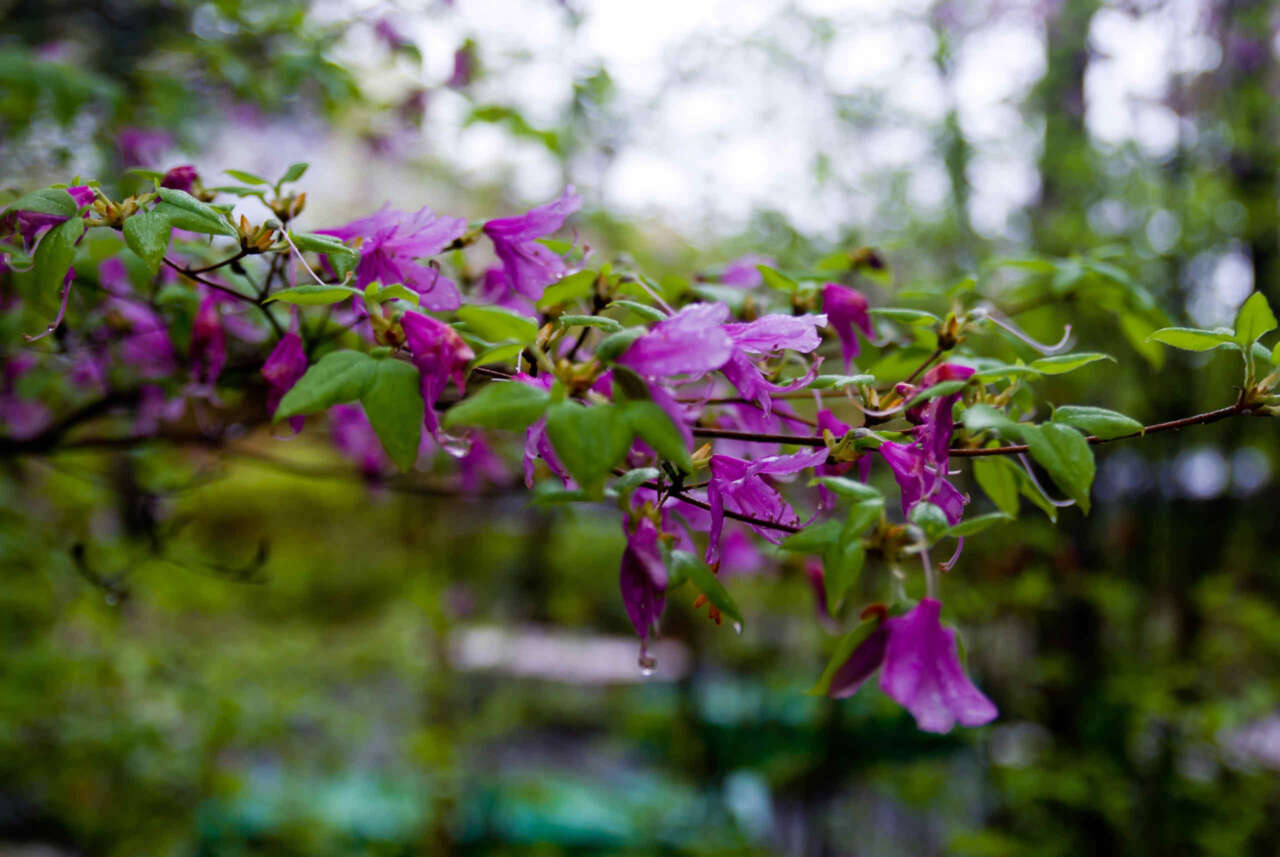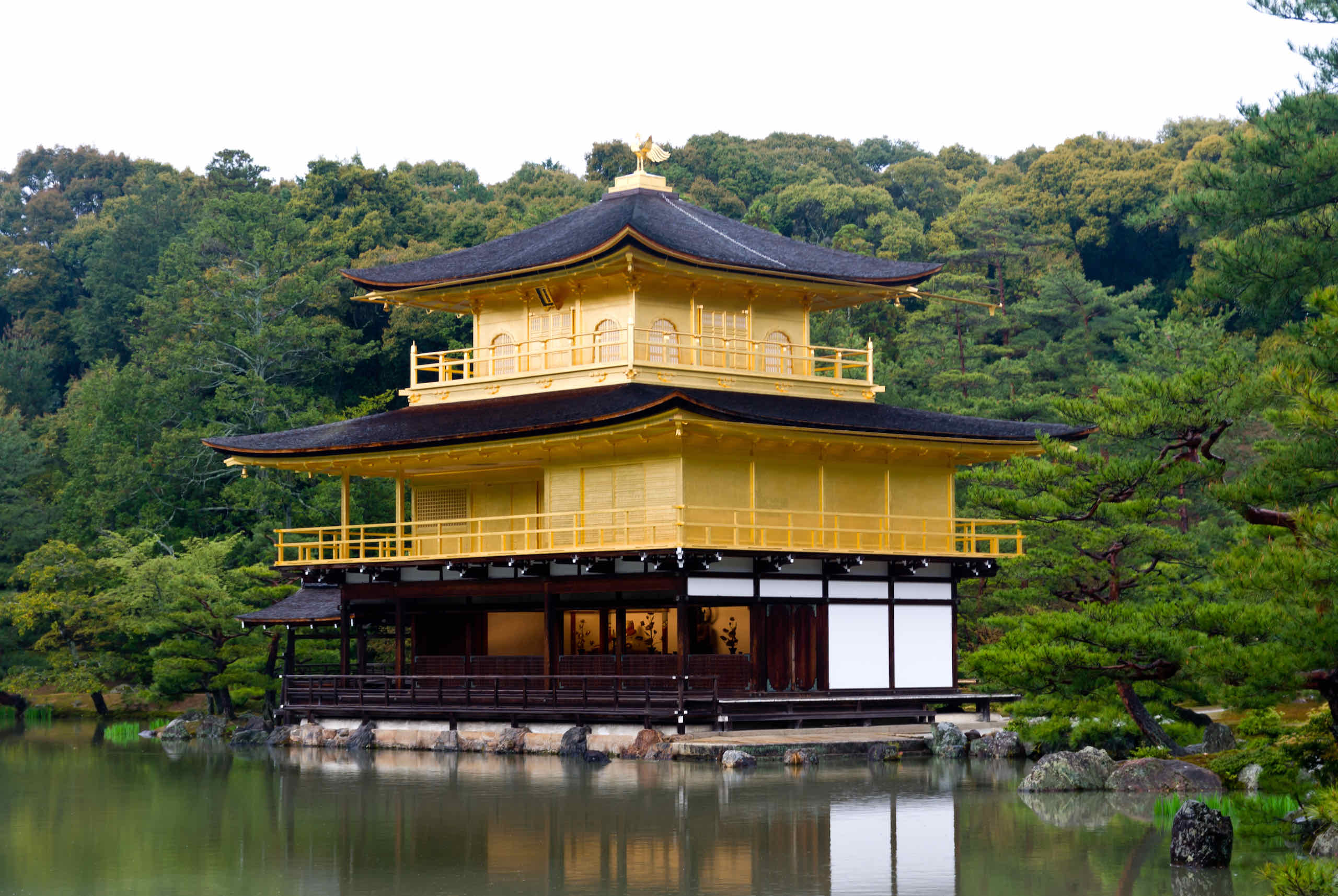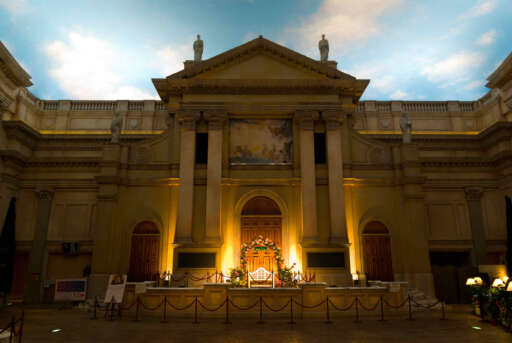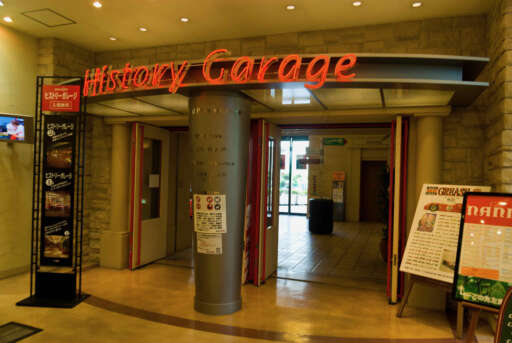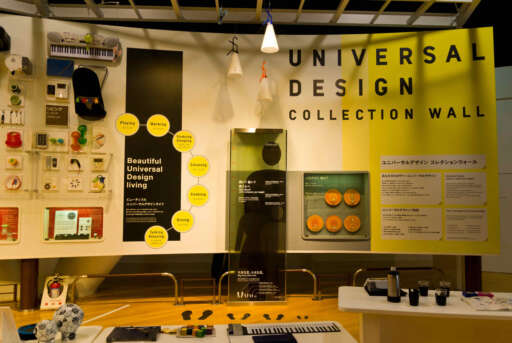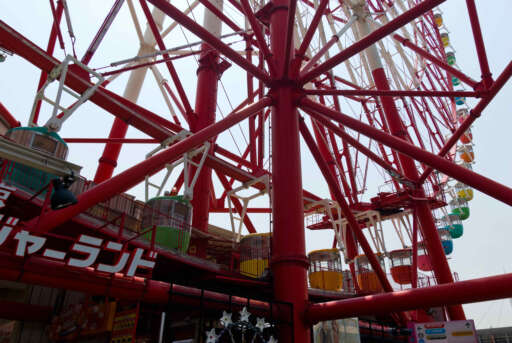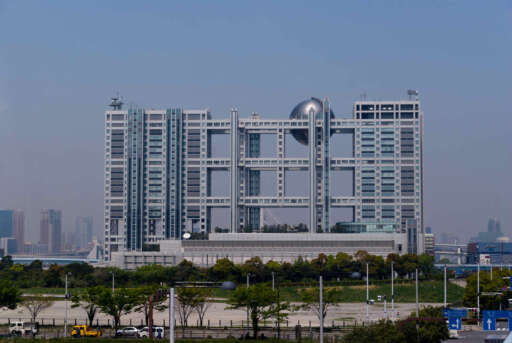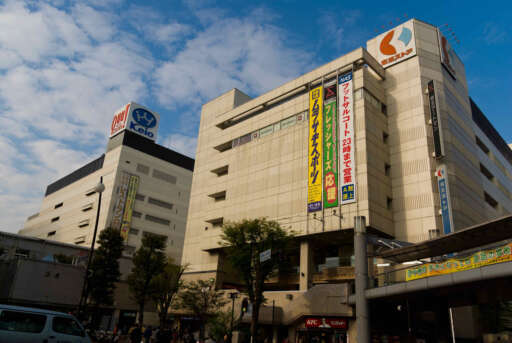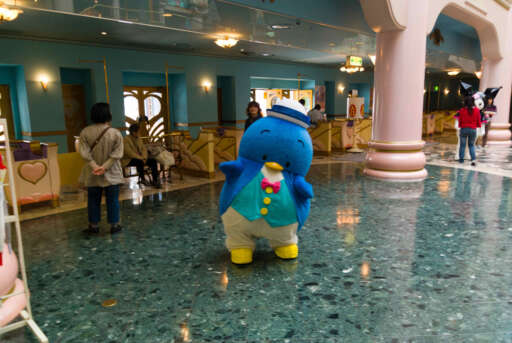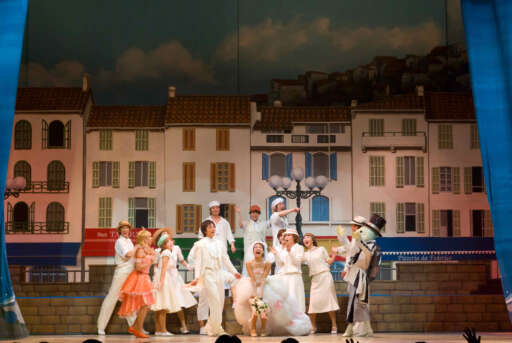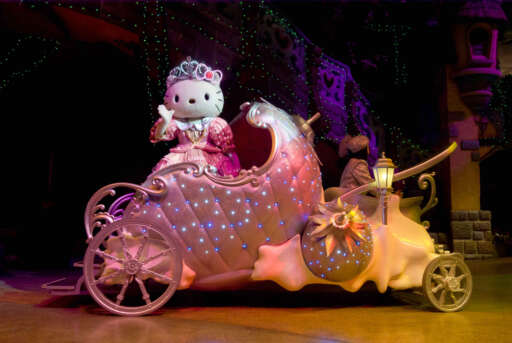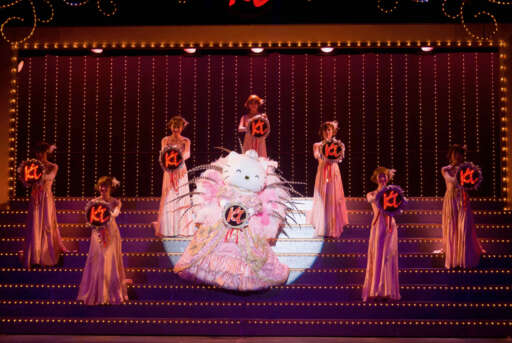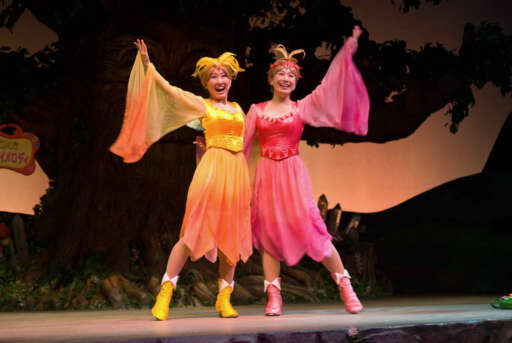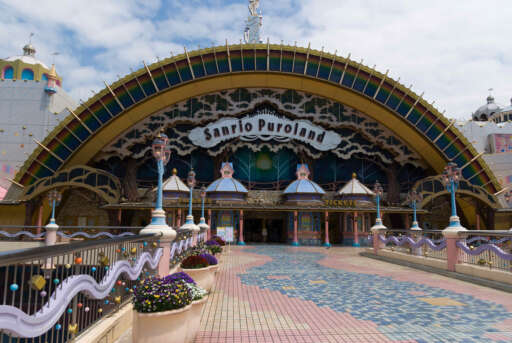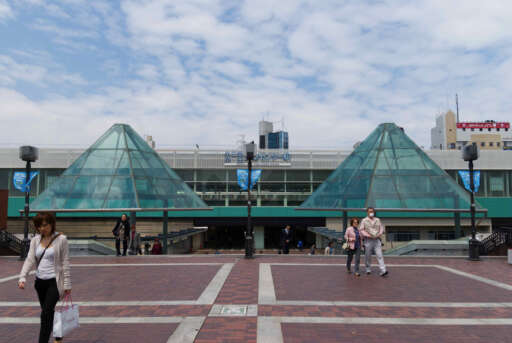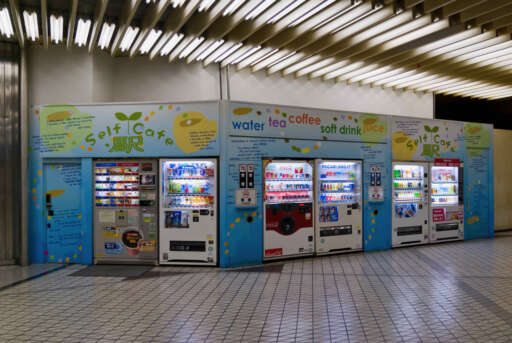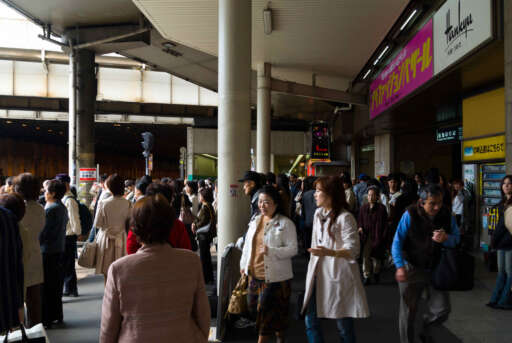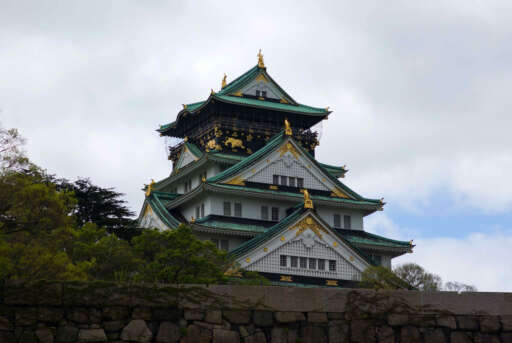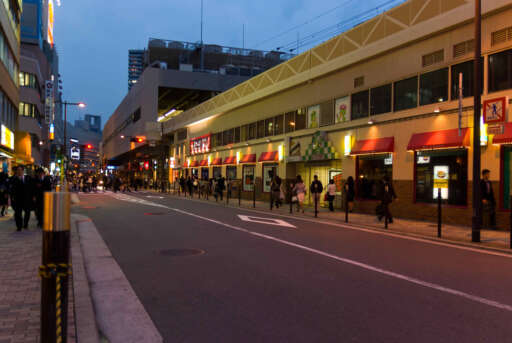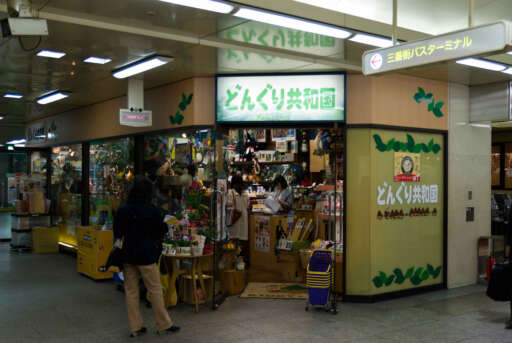Kinkakuji (金閣寺), also known as the “Temple of the Golden Pavilion”, is so famous that it is the subject of the novel by Mishima Yukio (三島由紀夫).
This site is more properly known as Rokuonji (鹿苑寺), or the Deer Park Temple. It was originally the home of an aristocrat, and then taken over by Shogun Ashikaga Yoshimitsu (足利義満) and the Golden Pavilion was constructed along with other buildings in the late fourteenth century as a representation of the Pure Land of Bliss (an important concept in the Pure Land branch of Buddhism). It was converted to a temple on the death of the shogun, but tragically all the buildings except the Golden Pavilion was destroyed in the fifteenth century. The Golden Pavilion survived until 1950 when it was burned down in a deliberate act of arson by a monk. Mishima’s novel is a fictionalised account of the life of this monk leading up to the destruction of the temple. The building was reconstructed in 1955, supposedly an exact replica, and re-gilded in the the 1980s, so it probably looks shinier than the original has ever been over it’s long life.
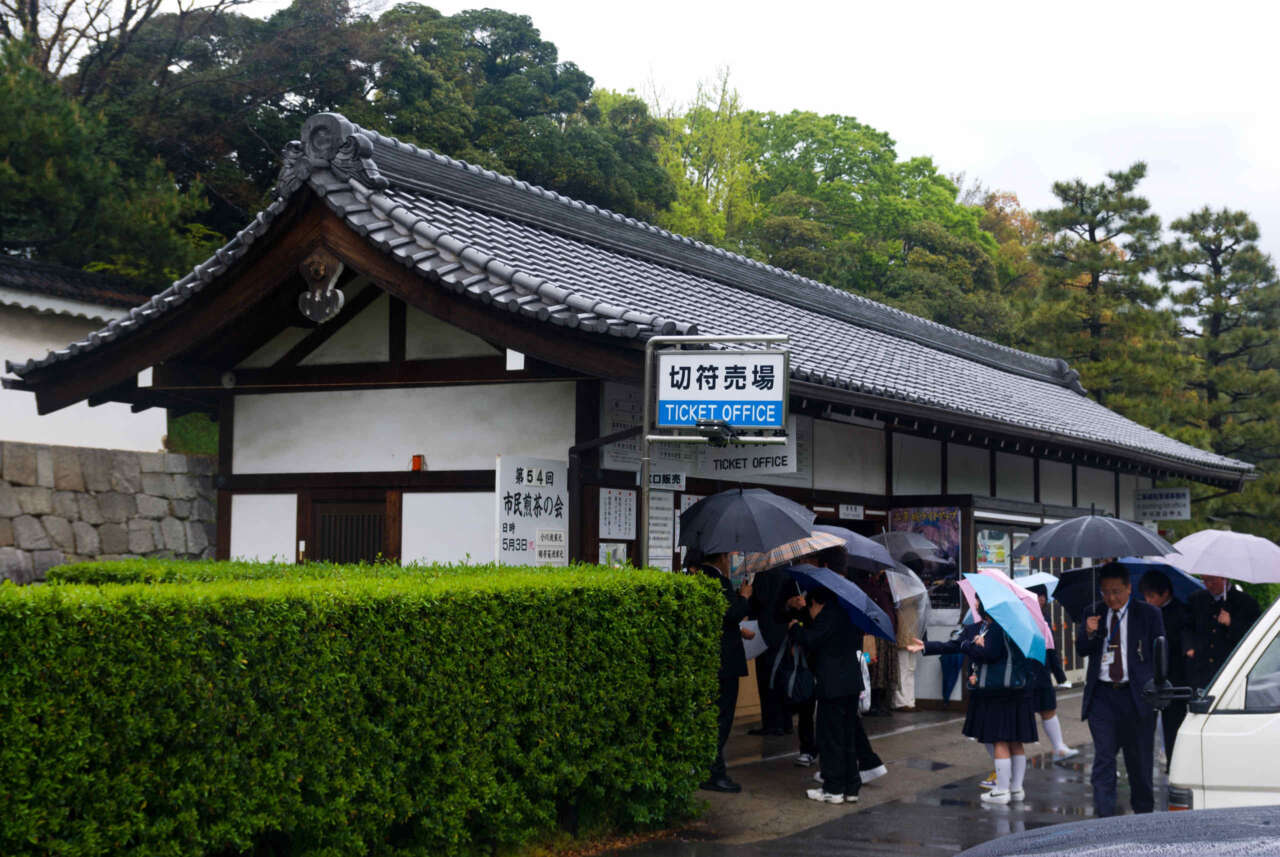
We arrived by bus. This is the ticket office.
After that, there is short walk to the main gate through a path across a grove of trees and a stone lantern.
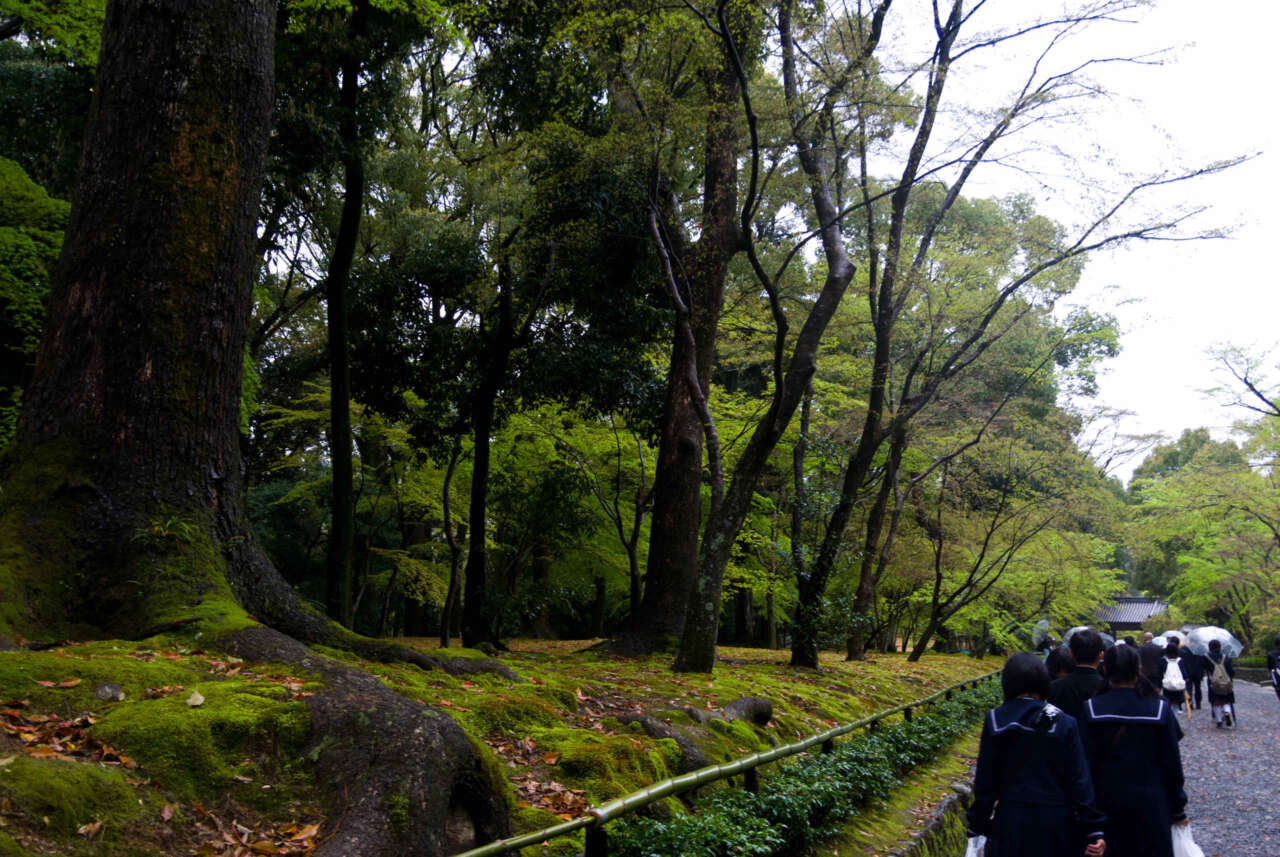
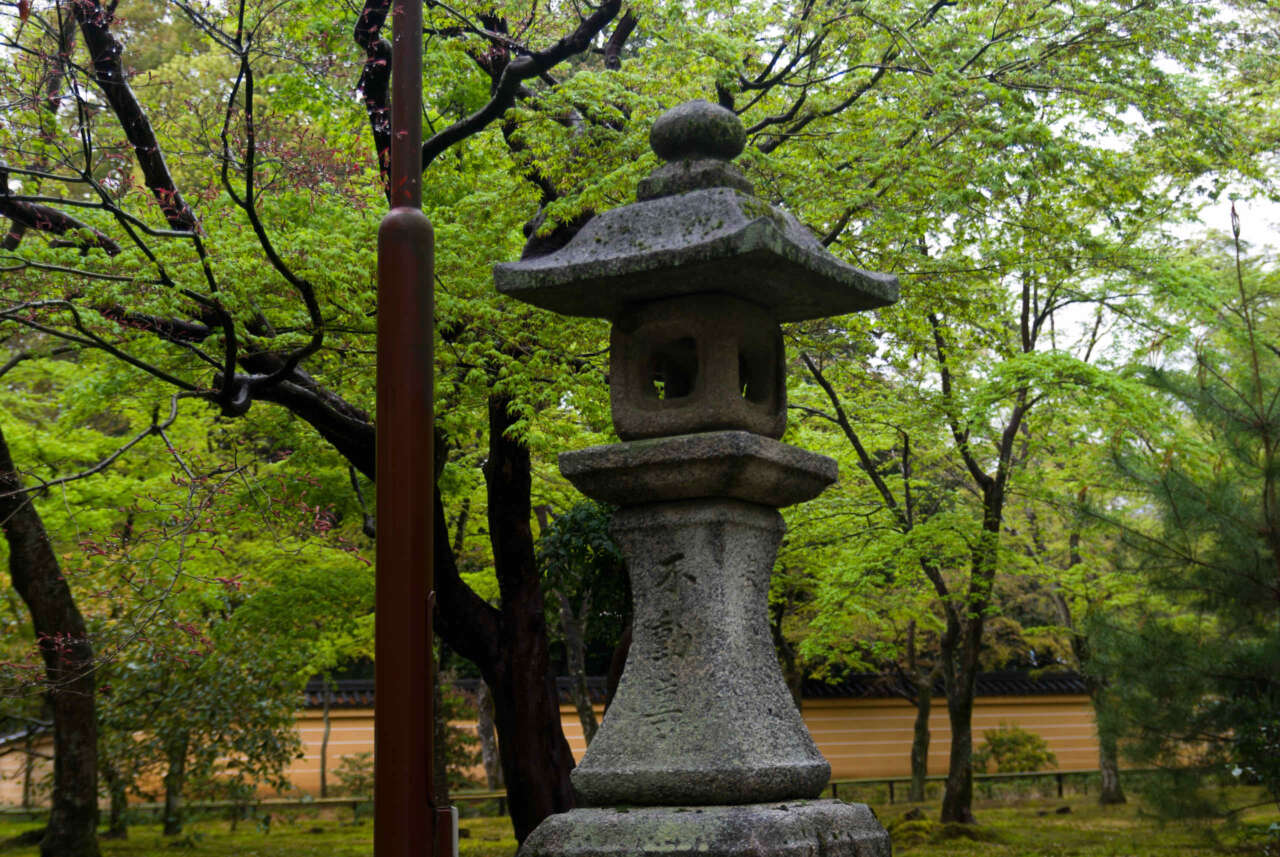
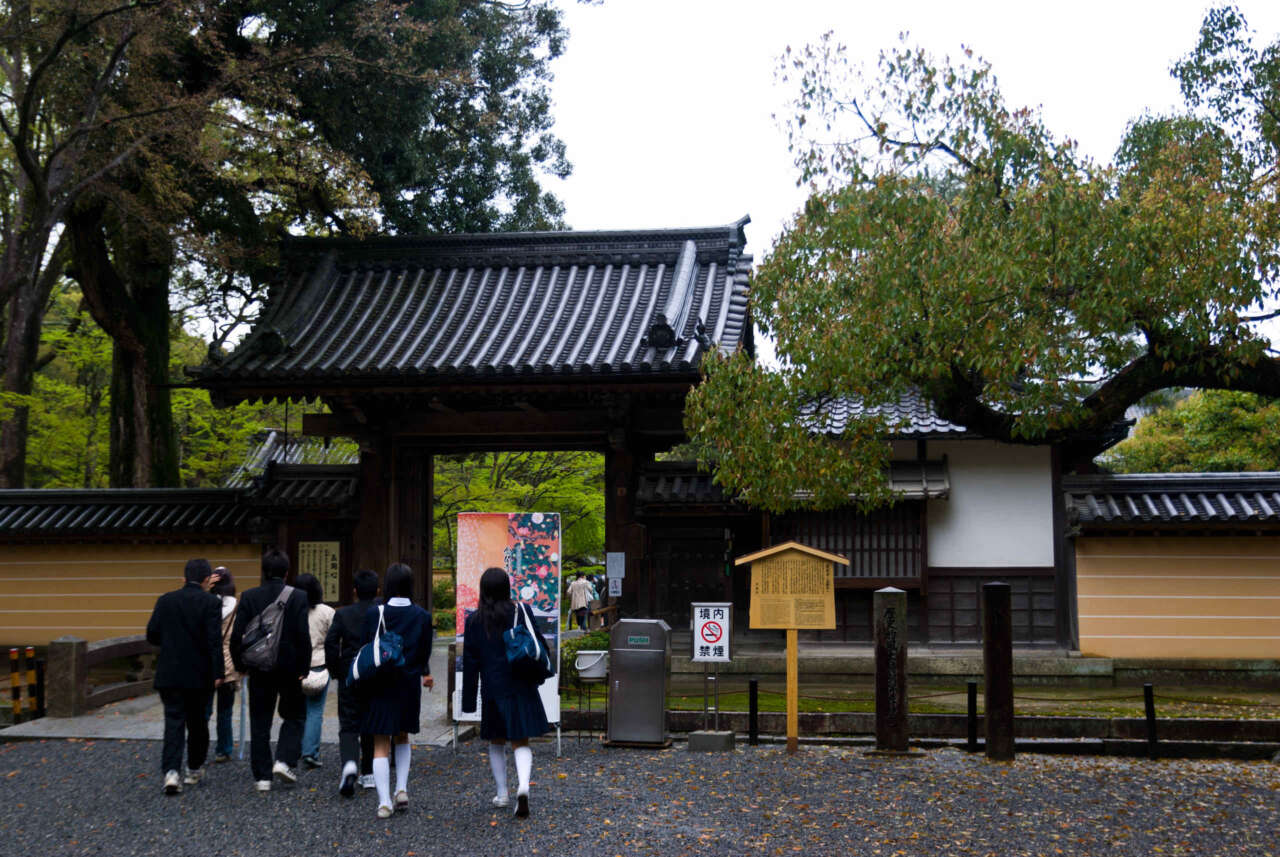
This is the main gate (総門).
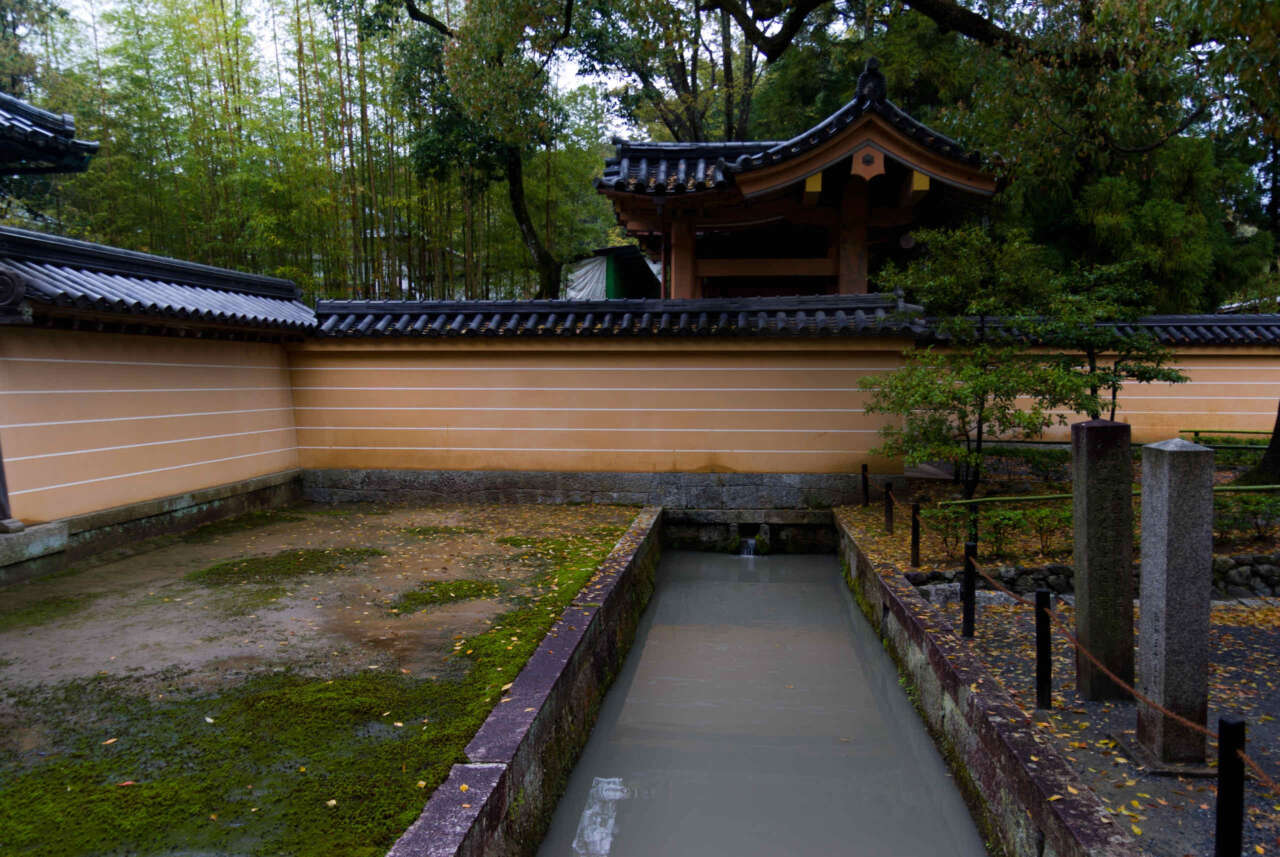
Interesing moat behind the main gate.
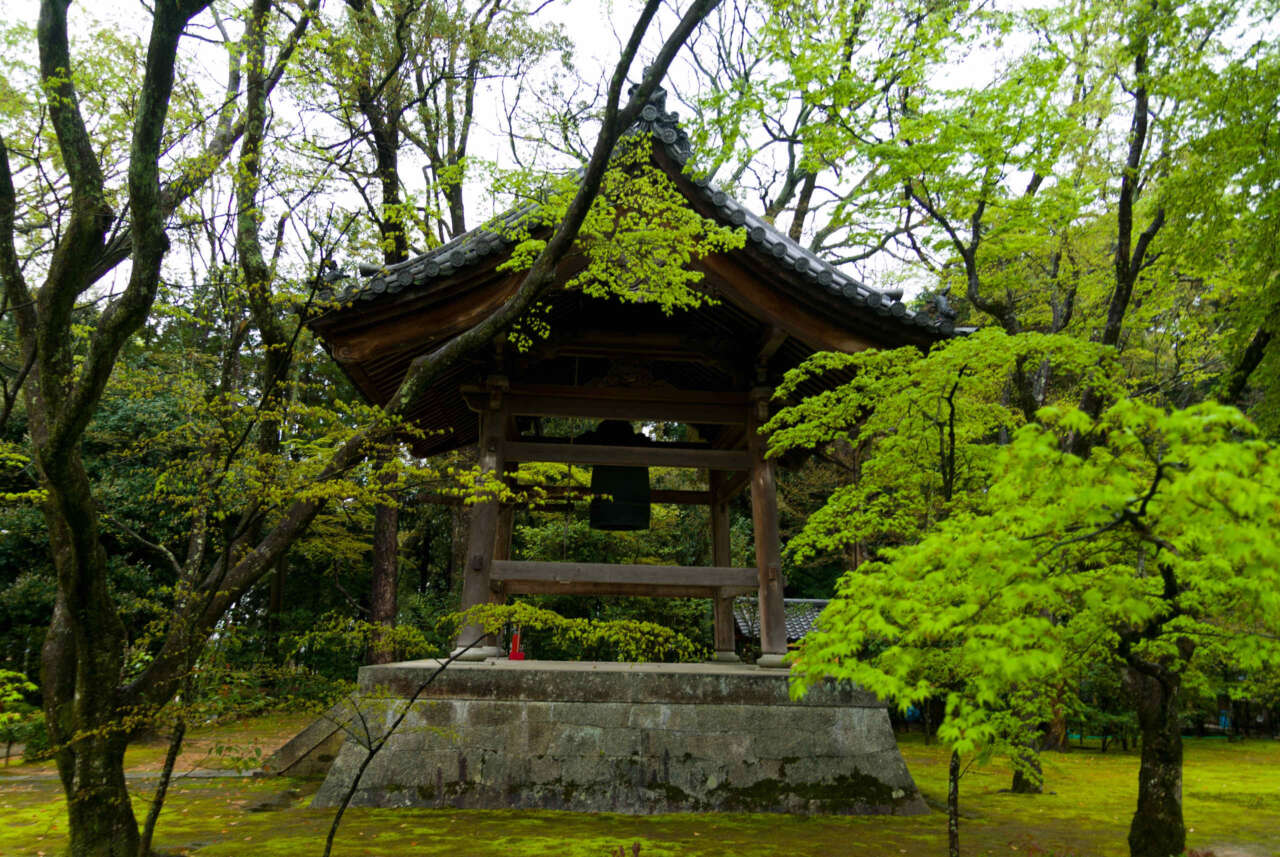
The bell tower (鐘楼) supposedly dates back to the original aristocrat who owned the land.
The reliquary, also known as the Golden Pavilion, is a three story building set against the Kyoukochi Pond (), with an artificial island called Ashihara Island (葦原島) in the middle (supposedly representing Japan). The lacquered second and third stories are adorned with pure gold leaf, the roof is shingled with countless planks of thin sawara cypress, and on top is the shining phoenix, an auspicious symbol in China.
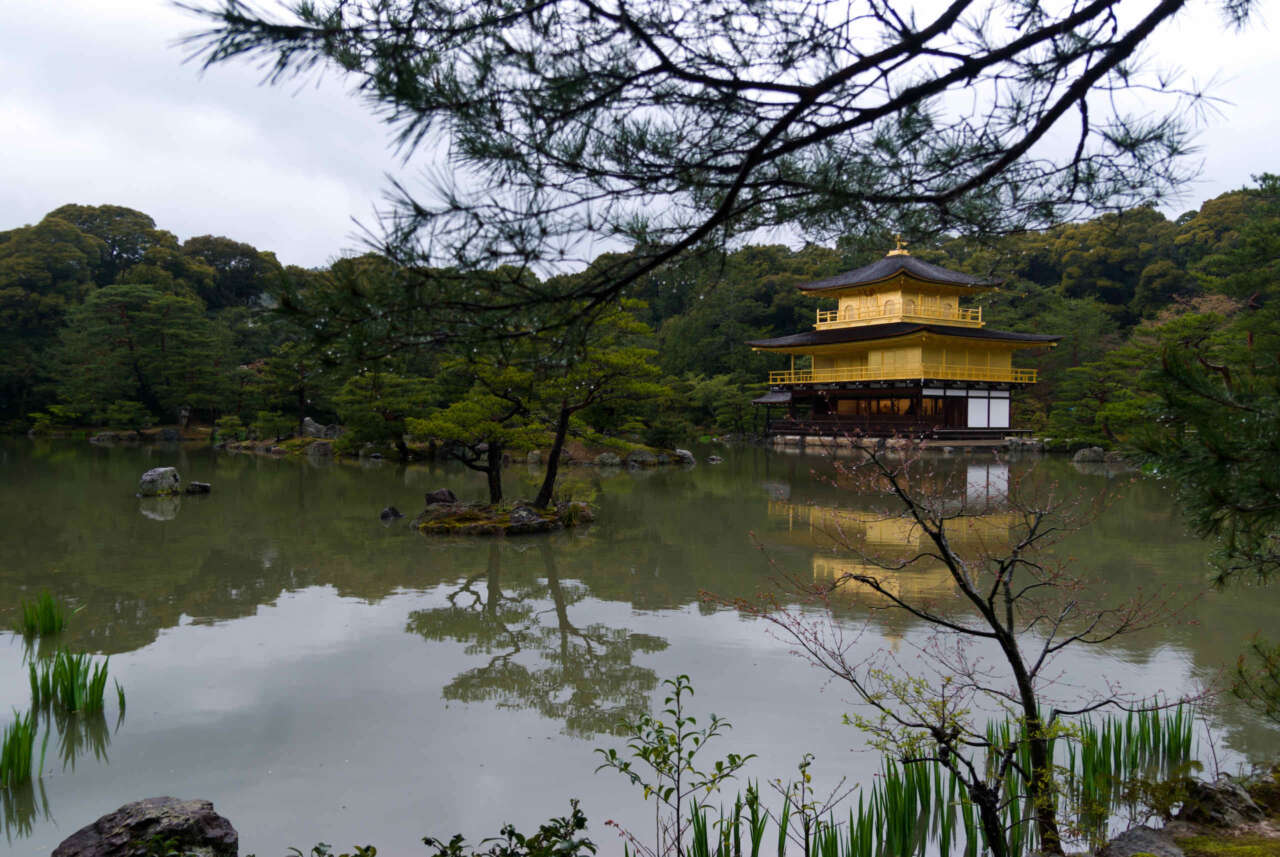
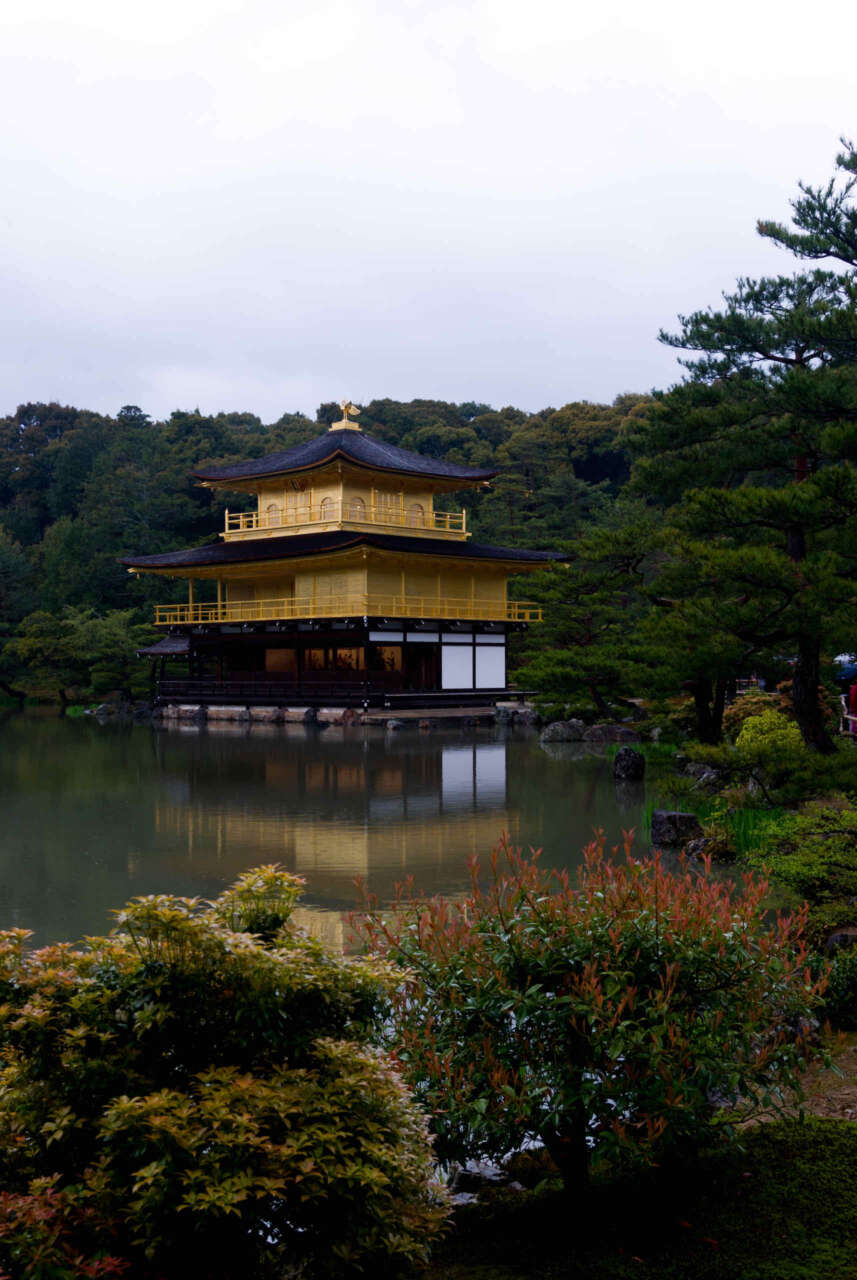
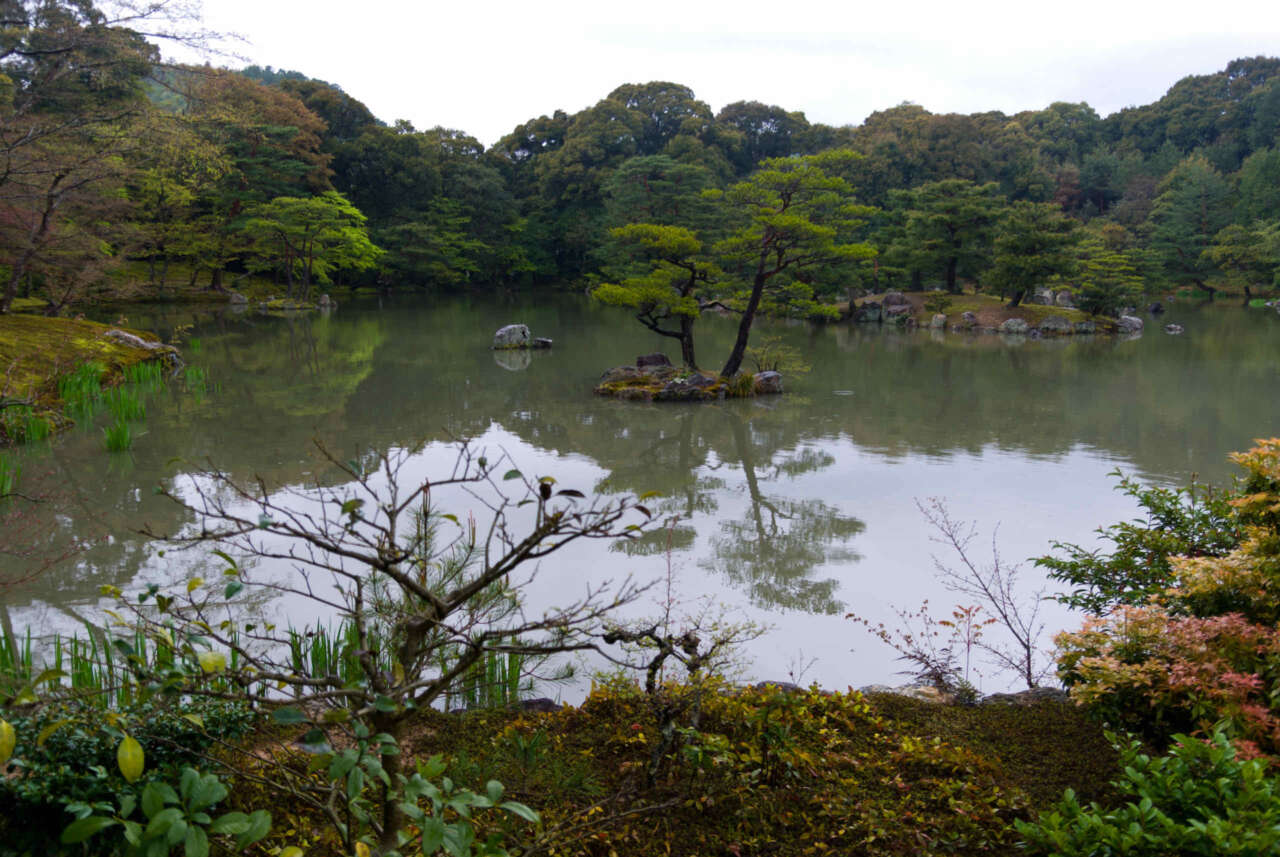
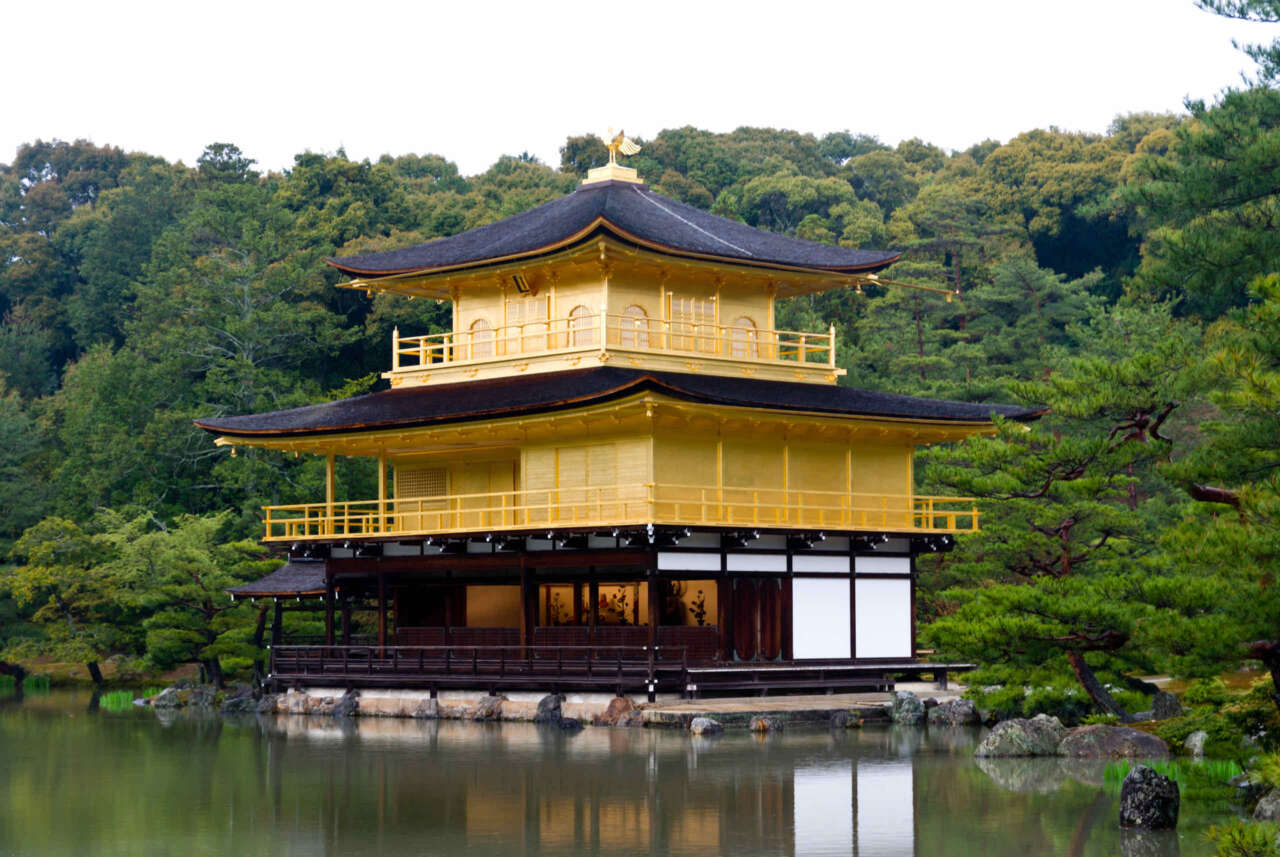
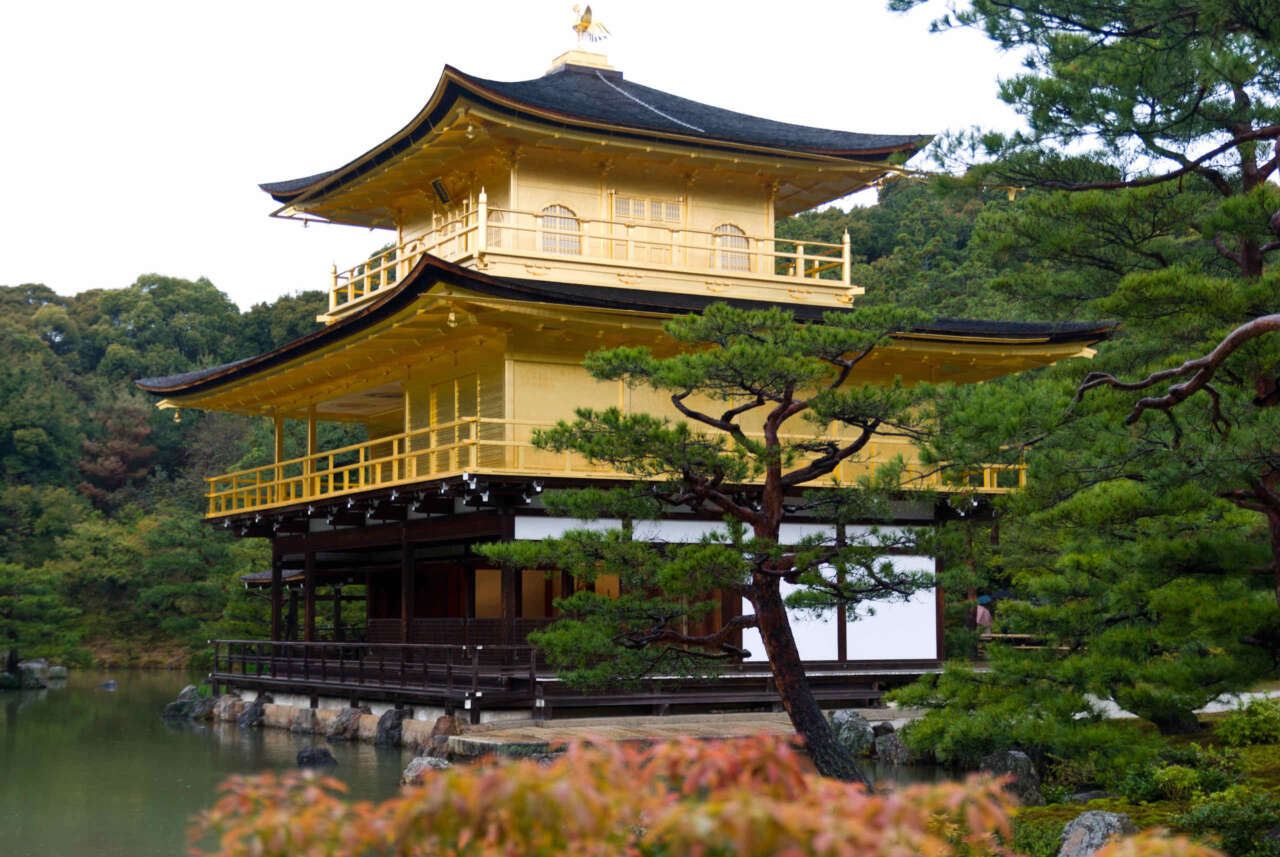
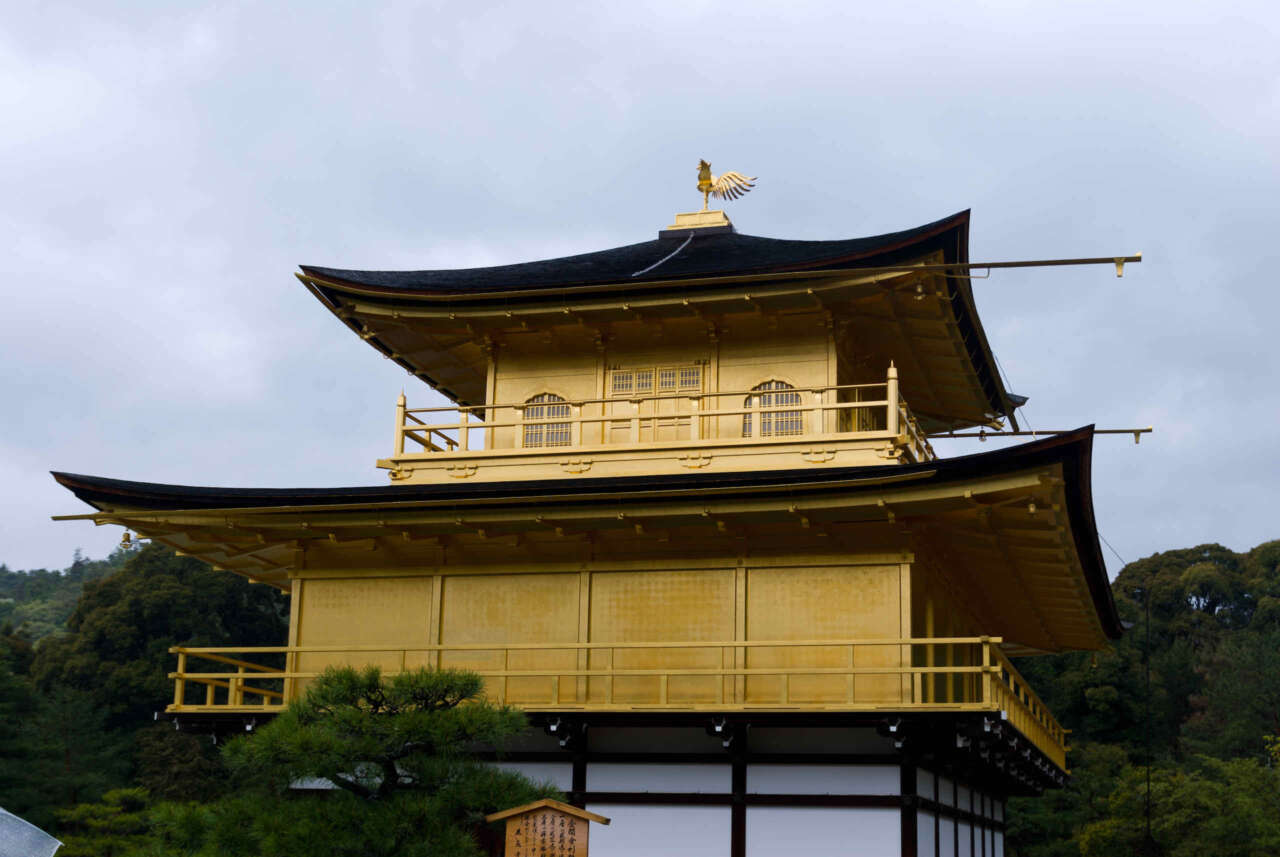
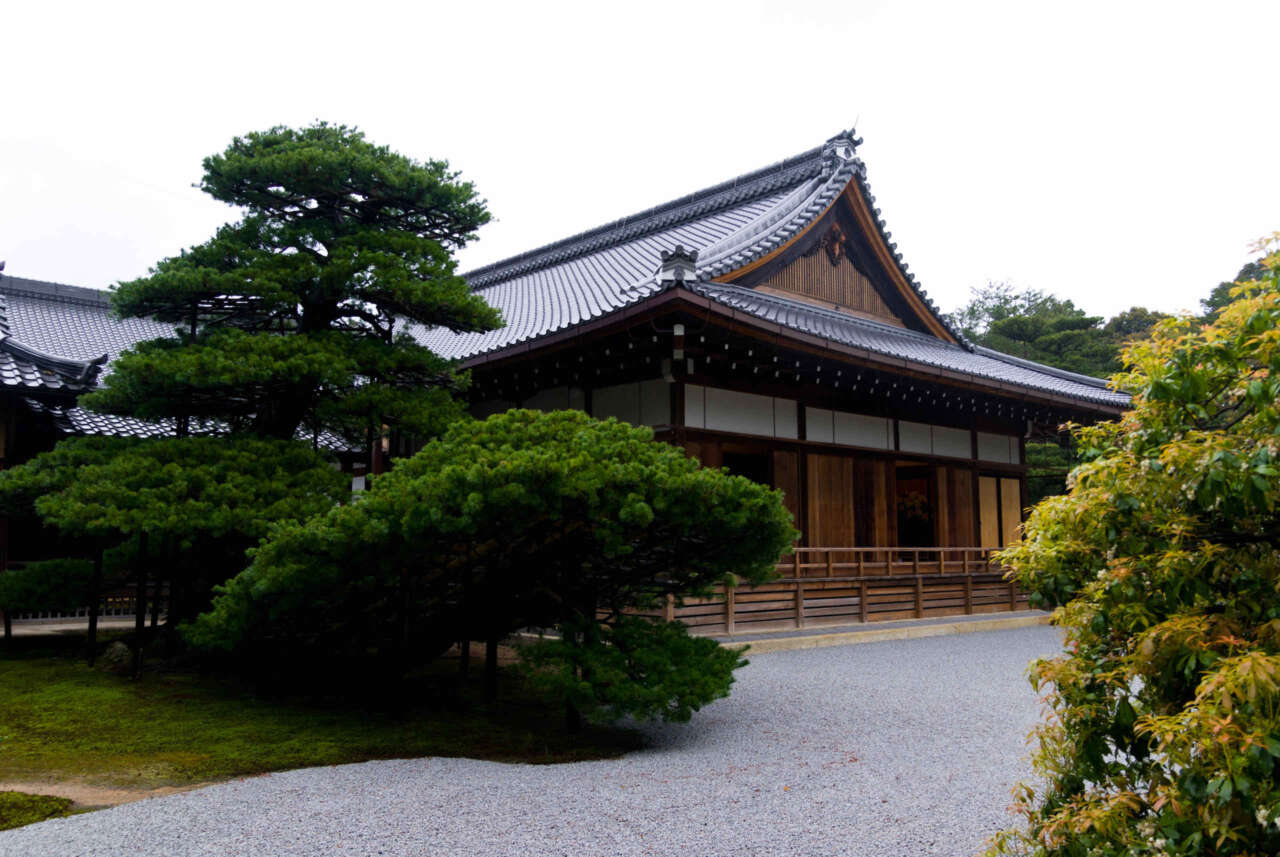
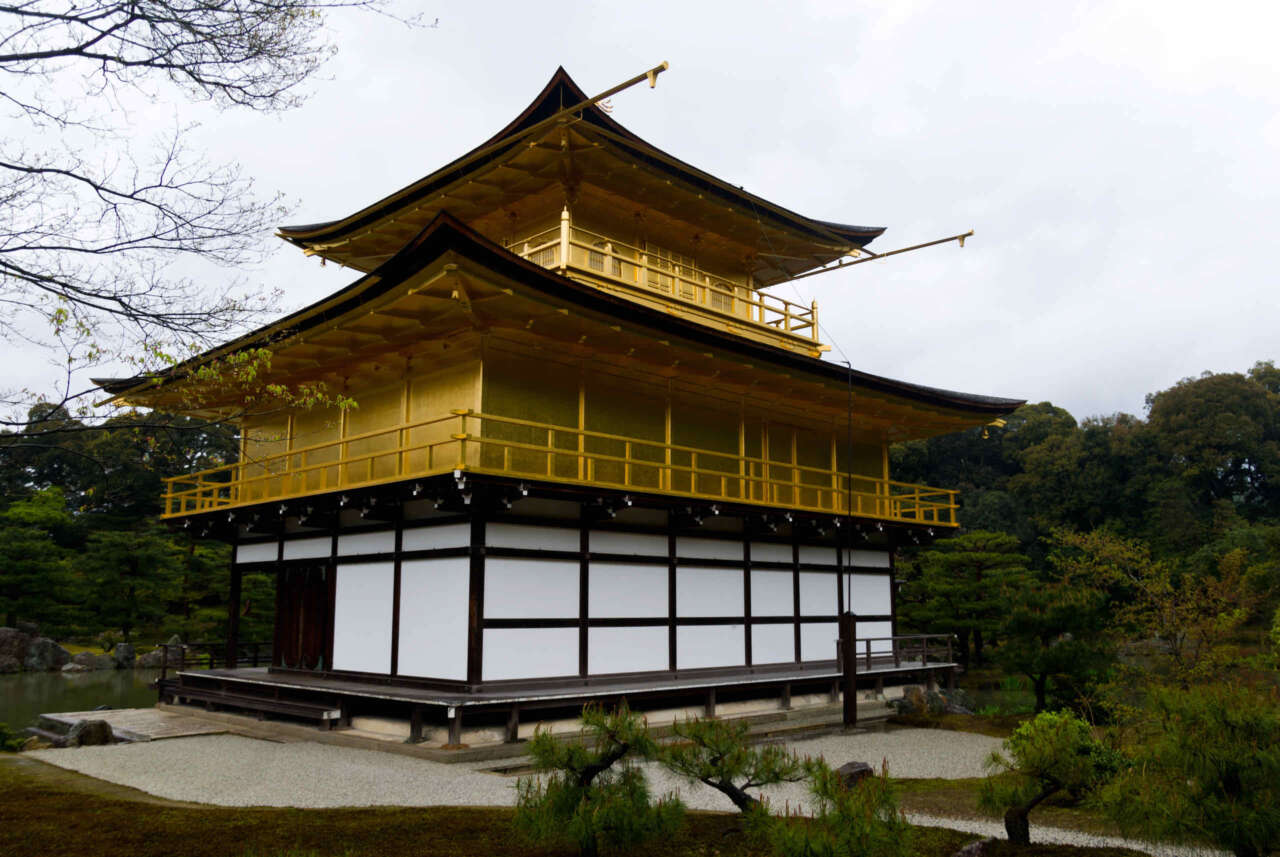
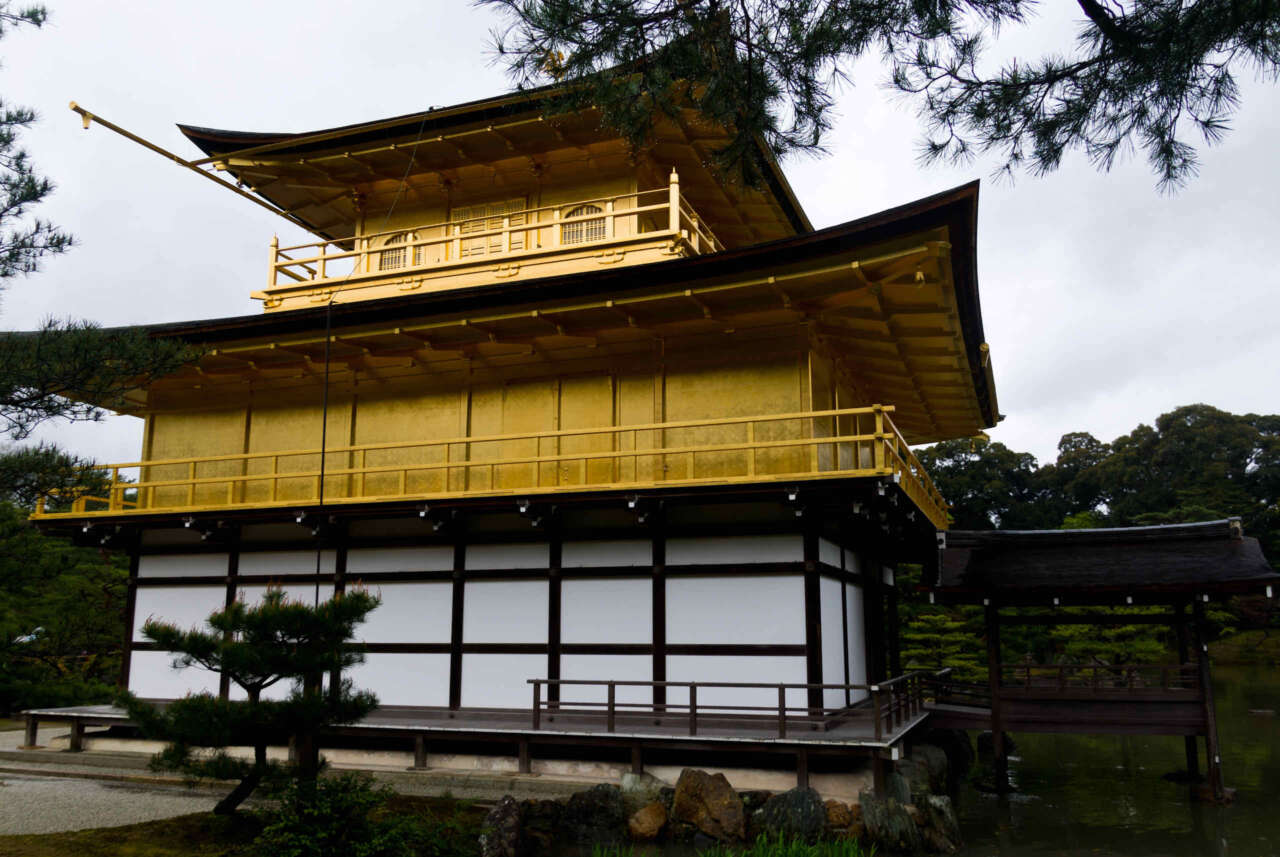
Nearby is the Hojo (方丈) – abbot’s quarters, and the Rikusyunomatsu (陸舟の松).
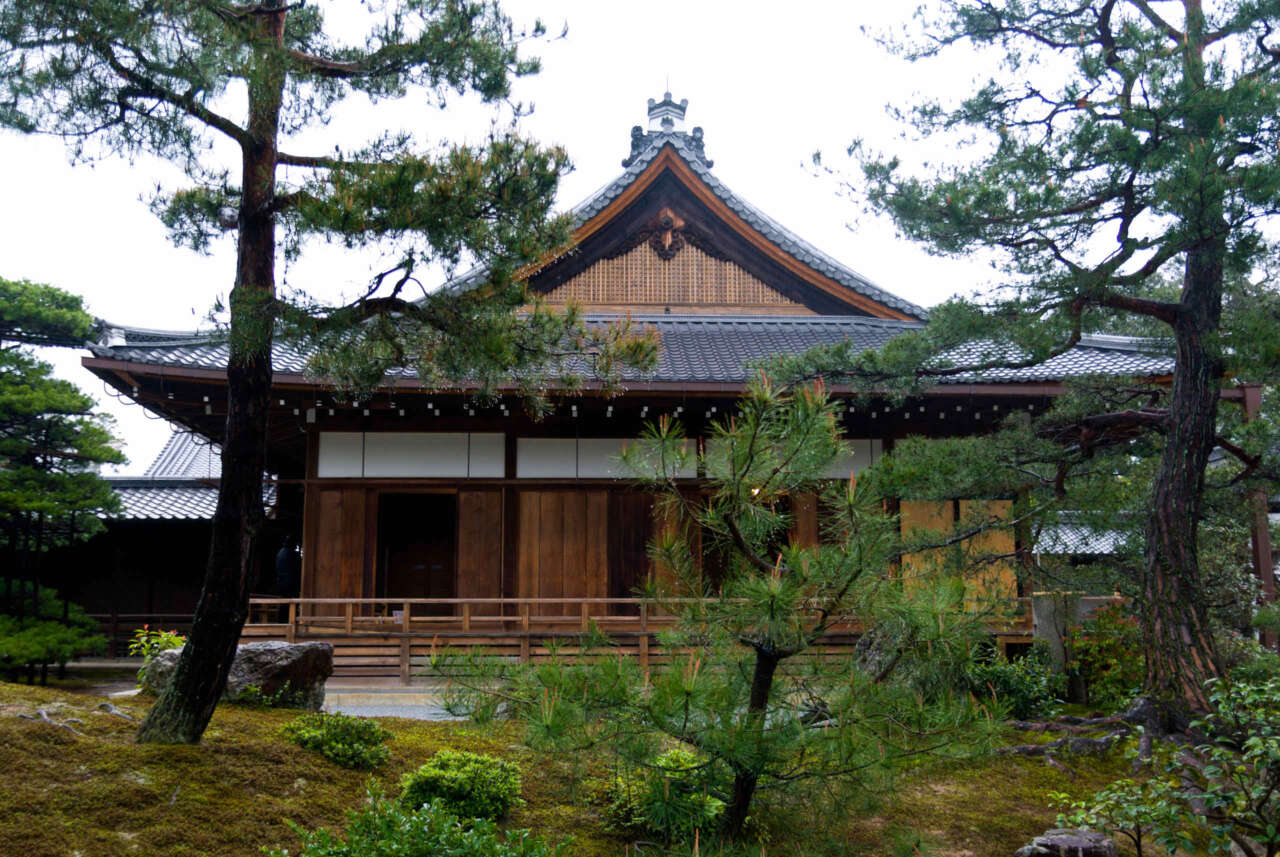

There’s also a path leading to a spot where you can view the wildlife on the pond – I was amazed at how ferociously the fish and turtles were grabbing the food.
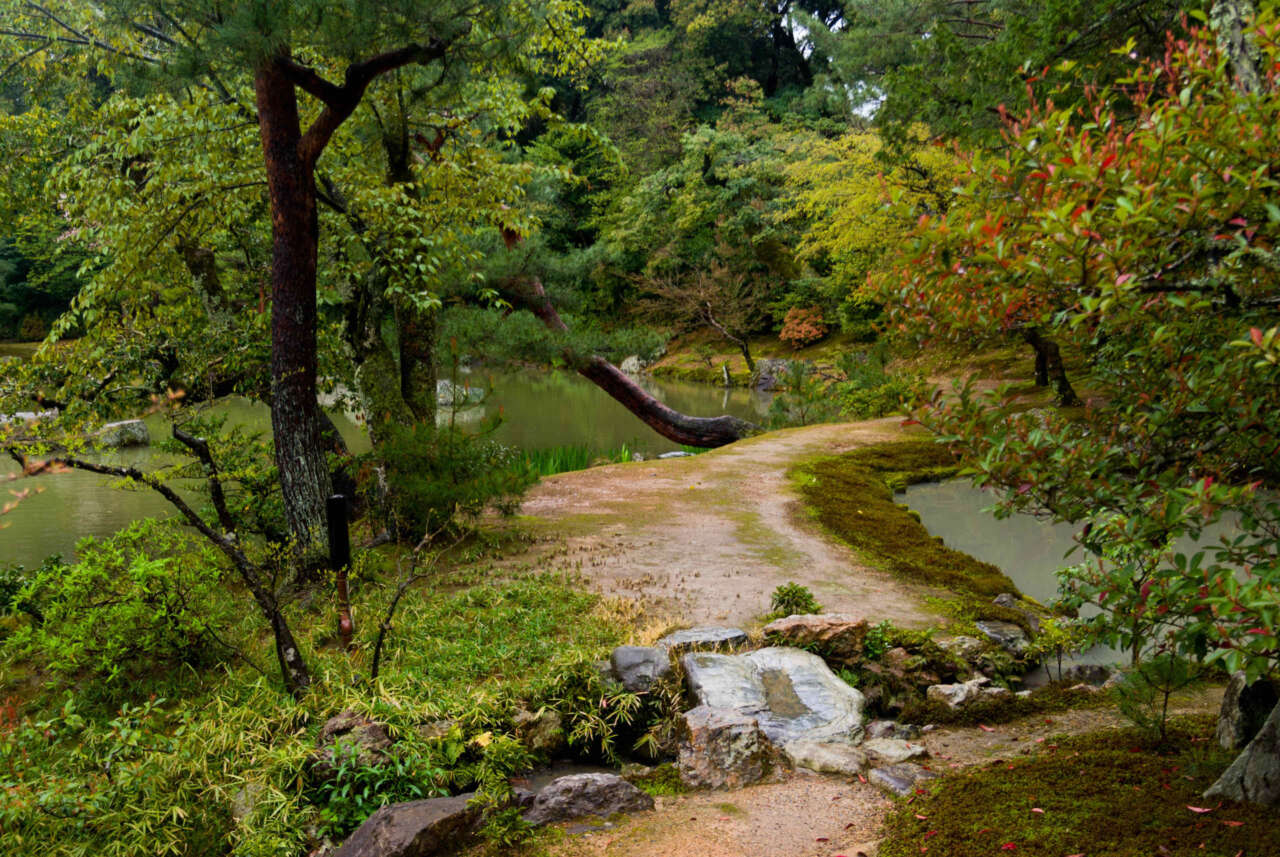
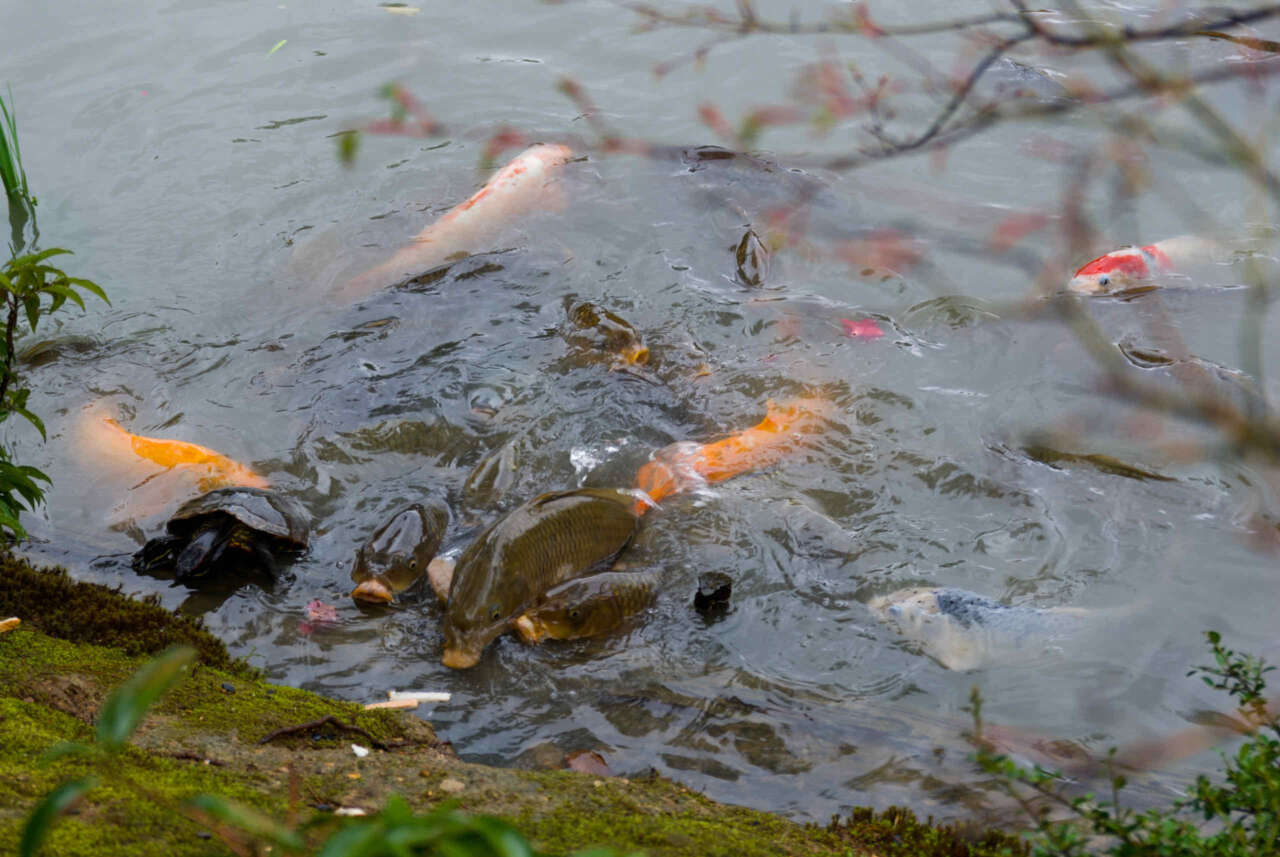
After that we walked through a wooded area that led to the Shin-un Shrine (榊雲). The Kobyo Shinun is where the tutelary deity of the temple, Kasuga Myojin, is enshrined.
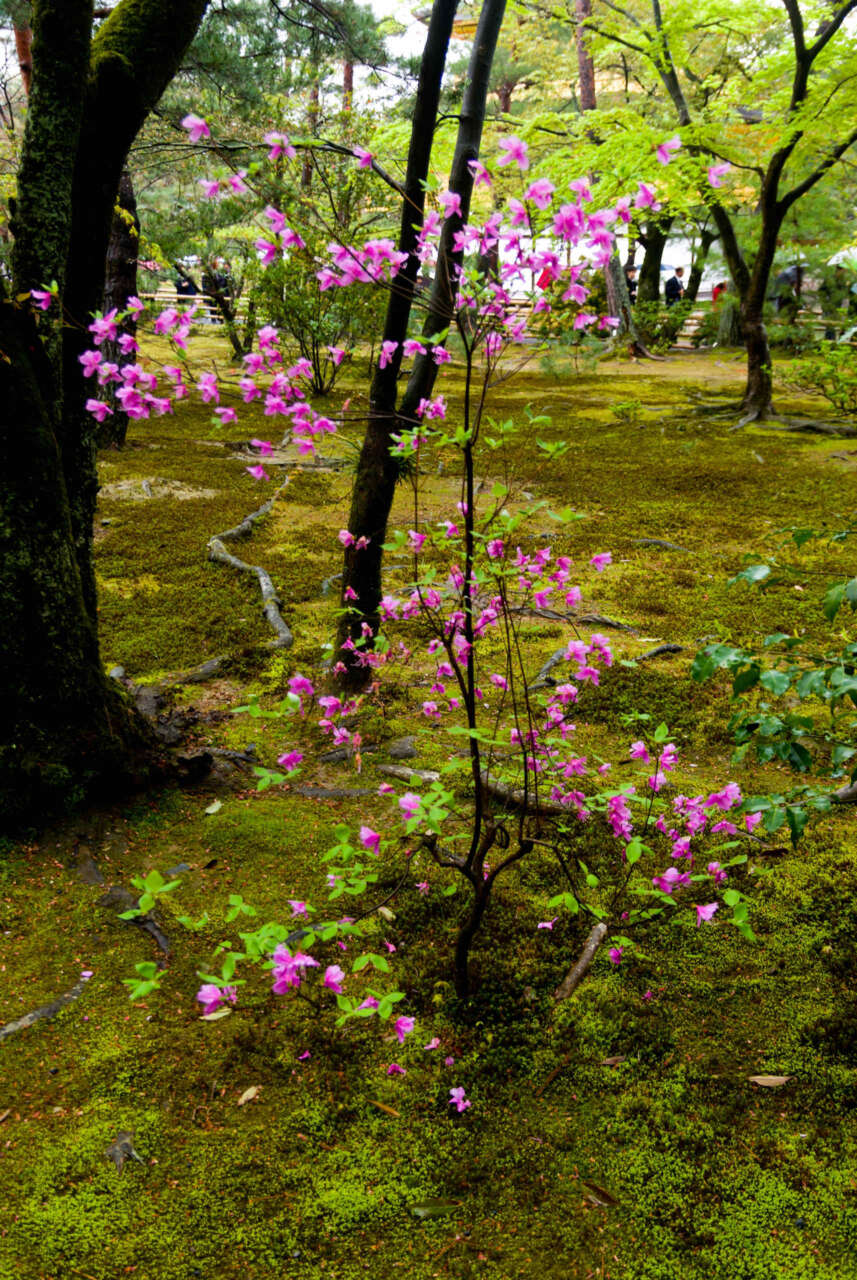
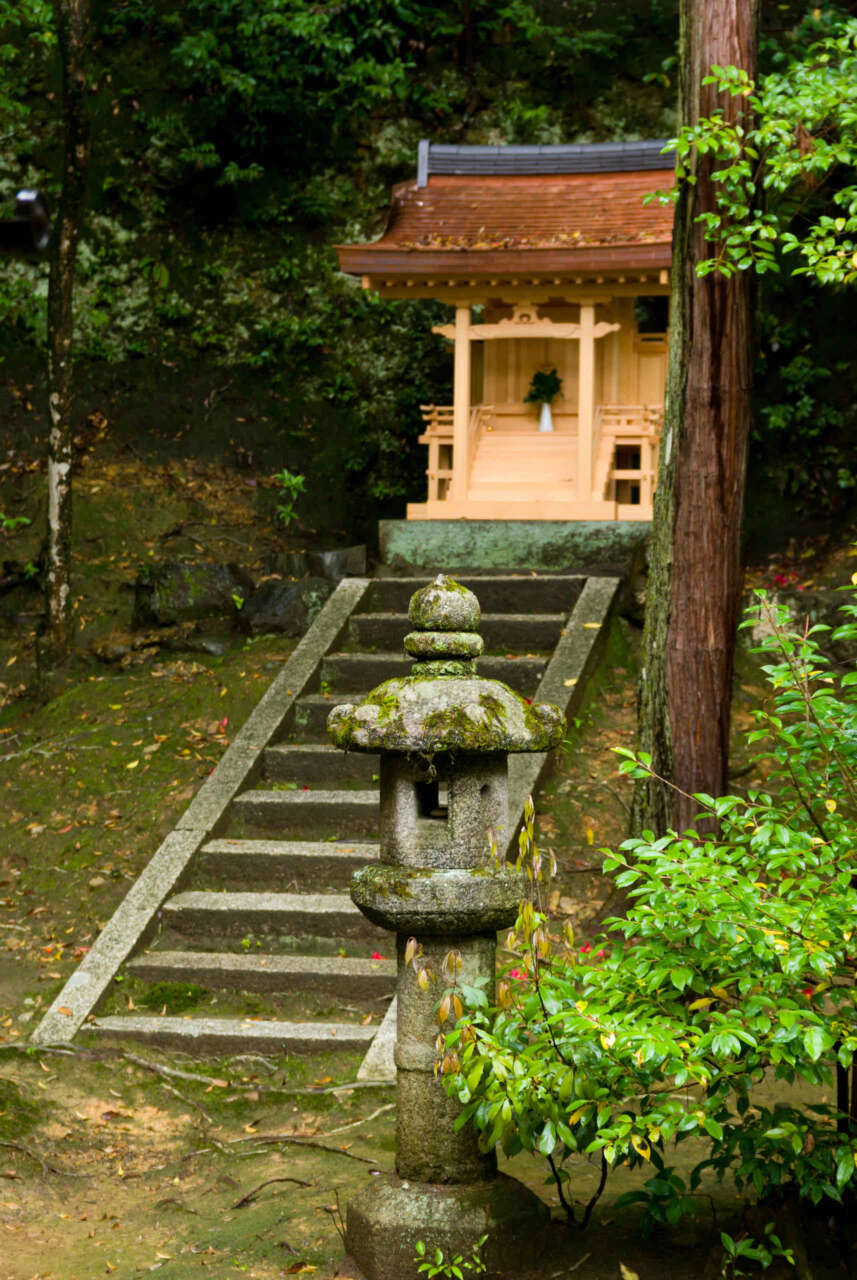
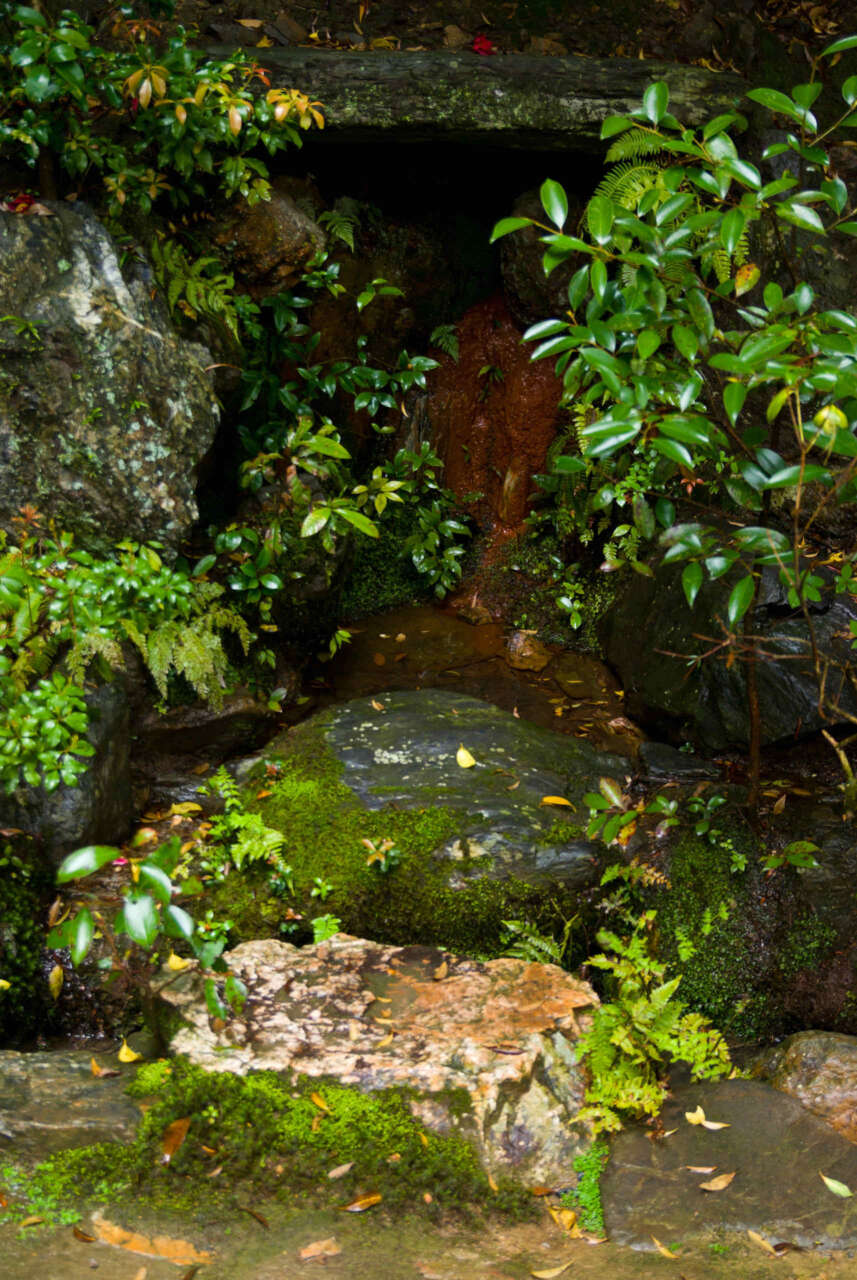
This is the Gingasen (銀河泉) – traditionally used for tea ceremonies. Loosely translating to Milky Way Spring, this is supposedly where Yoshimitsu got the water for his tea.
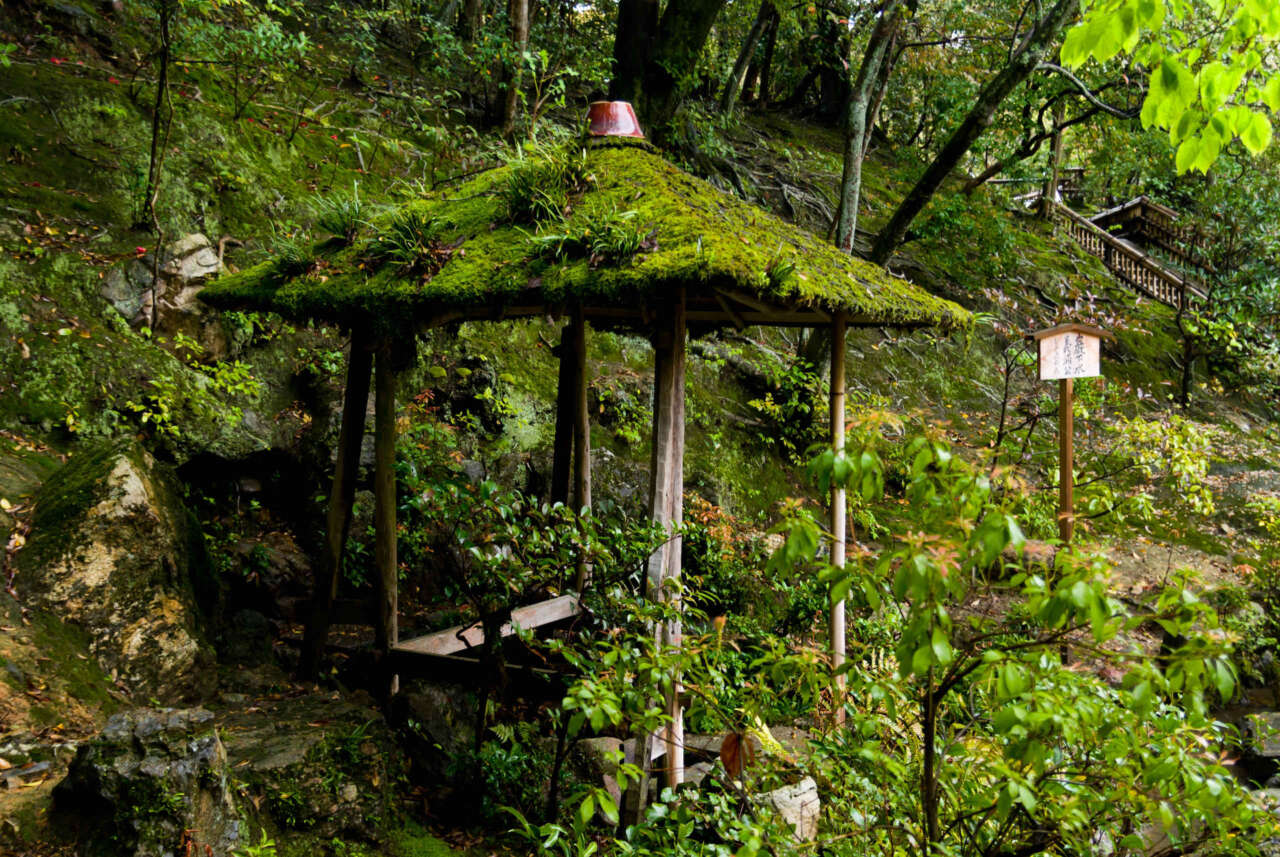
And next to it is a another stream called Gankasui (巌下水) – traditionally used for taking a shower and freshening up.
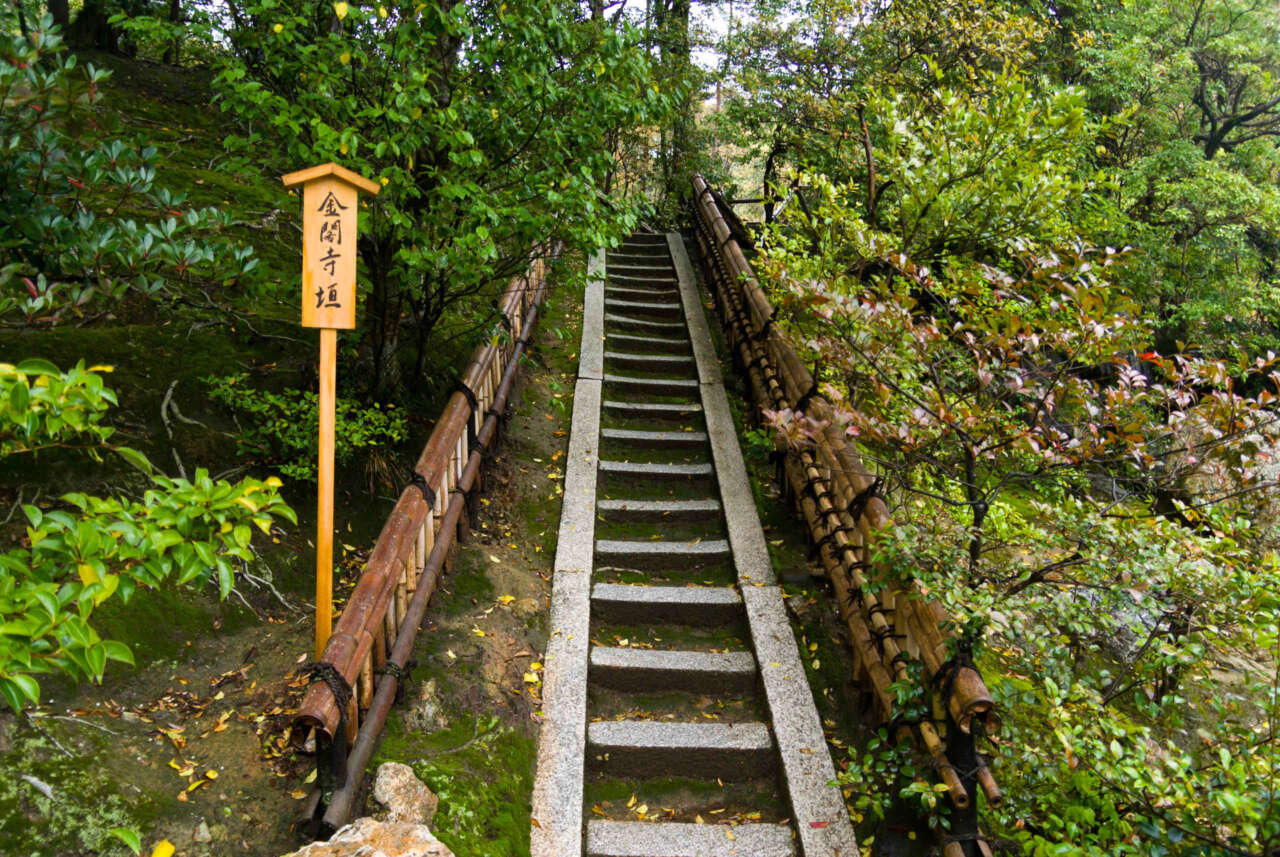
These are the steps leading up to the falls, Ryumontaki (金閣寺垣).
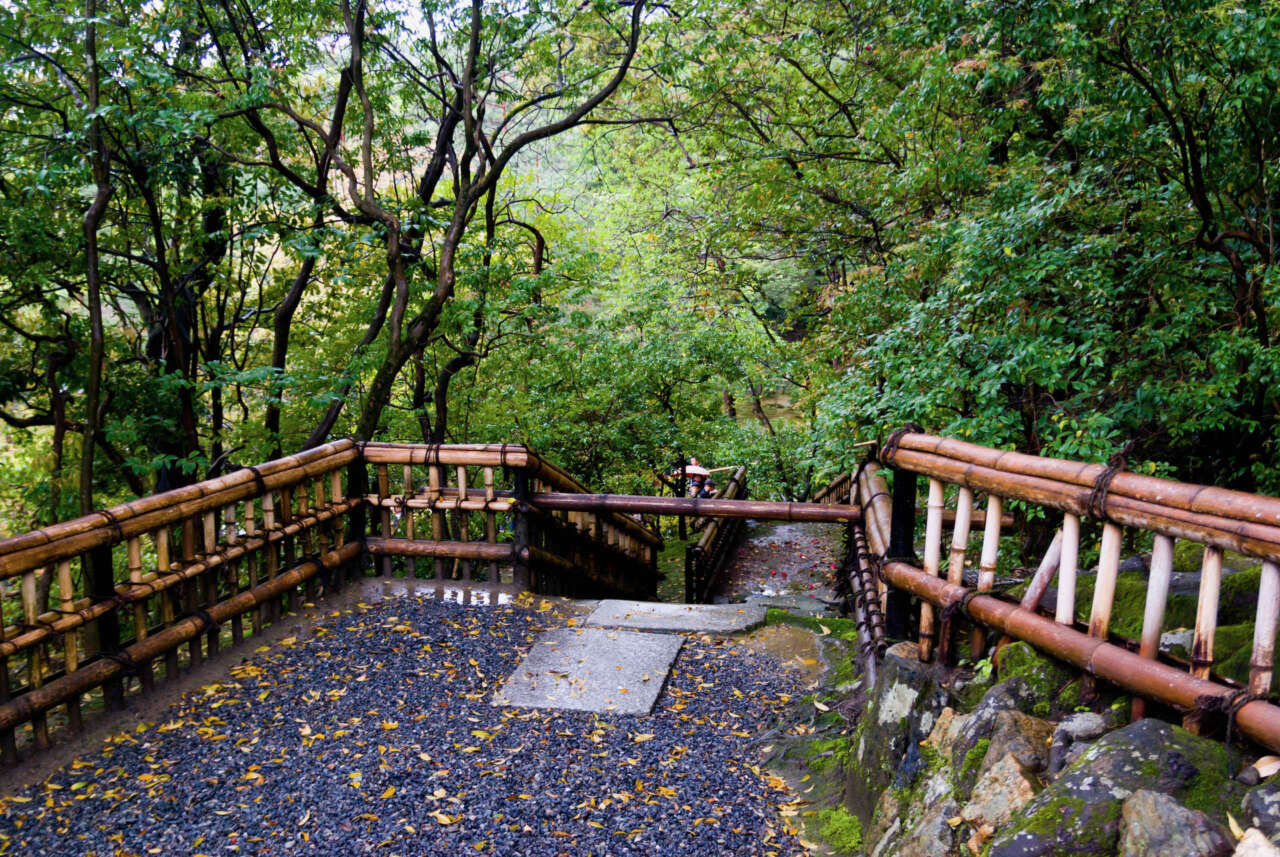
Observation platform for Ryumontaki (Dragon Gate Falls).
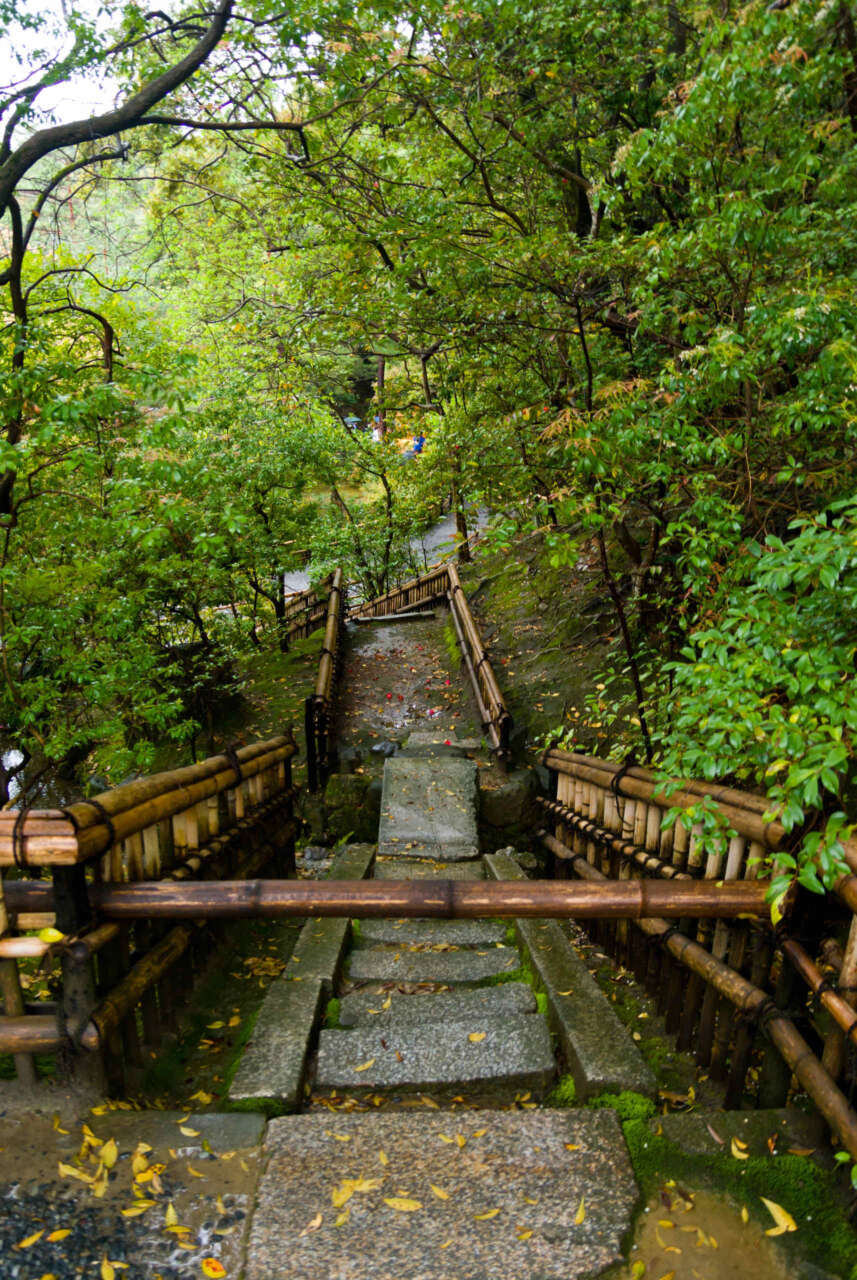
The stone bridge is called the Kokei-kyo (虎渓橋). On both sides are low bamboo fences, which are considered as the model for a style of bamboo fences called Kinkakuji-gaki.
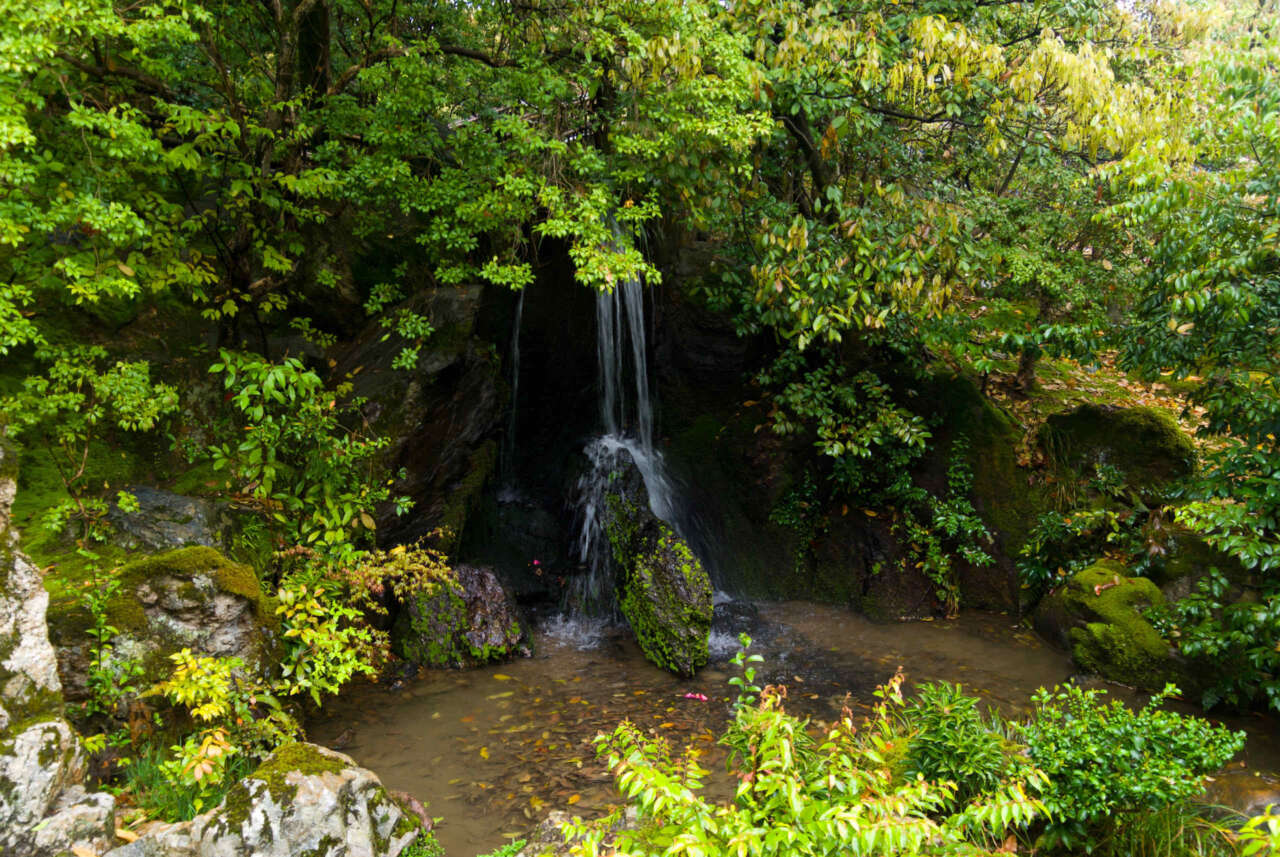
This is the Ryumontaki – so called because the stones at the base of the falls resemble carp, and legend says when carps climb up a waterfall they become dragons – the stone in middle resembles a carp transforming into a dragon.
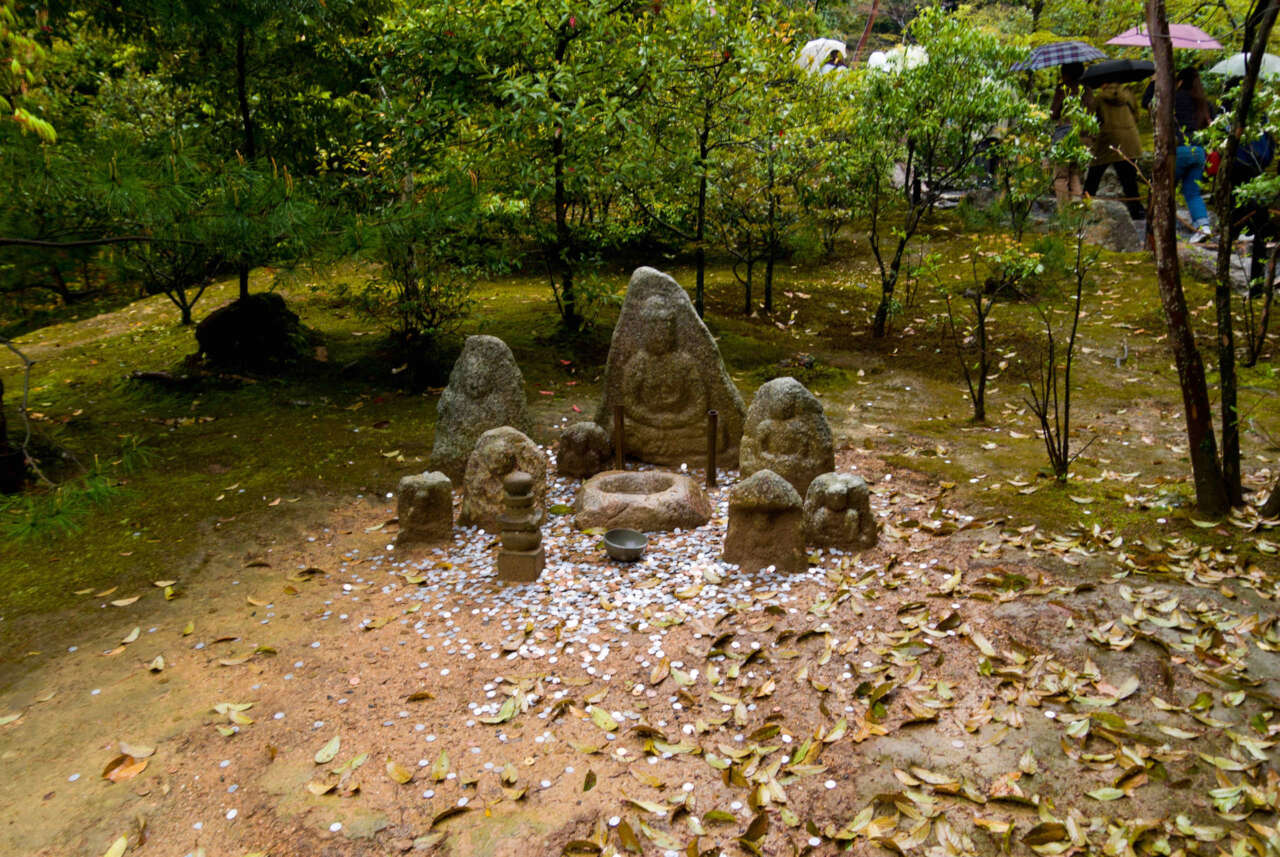
A set of of Buddhist stone sculptures.
We climbed up to a higher level with additional buildings.
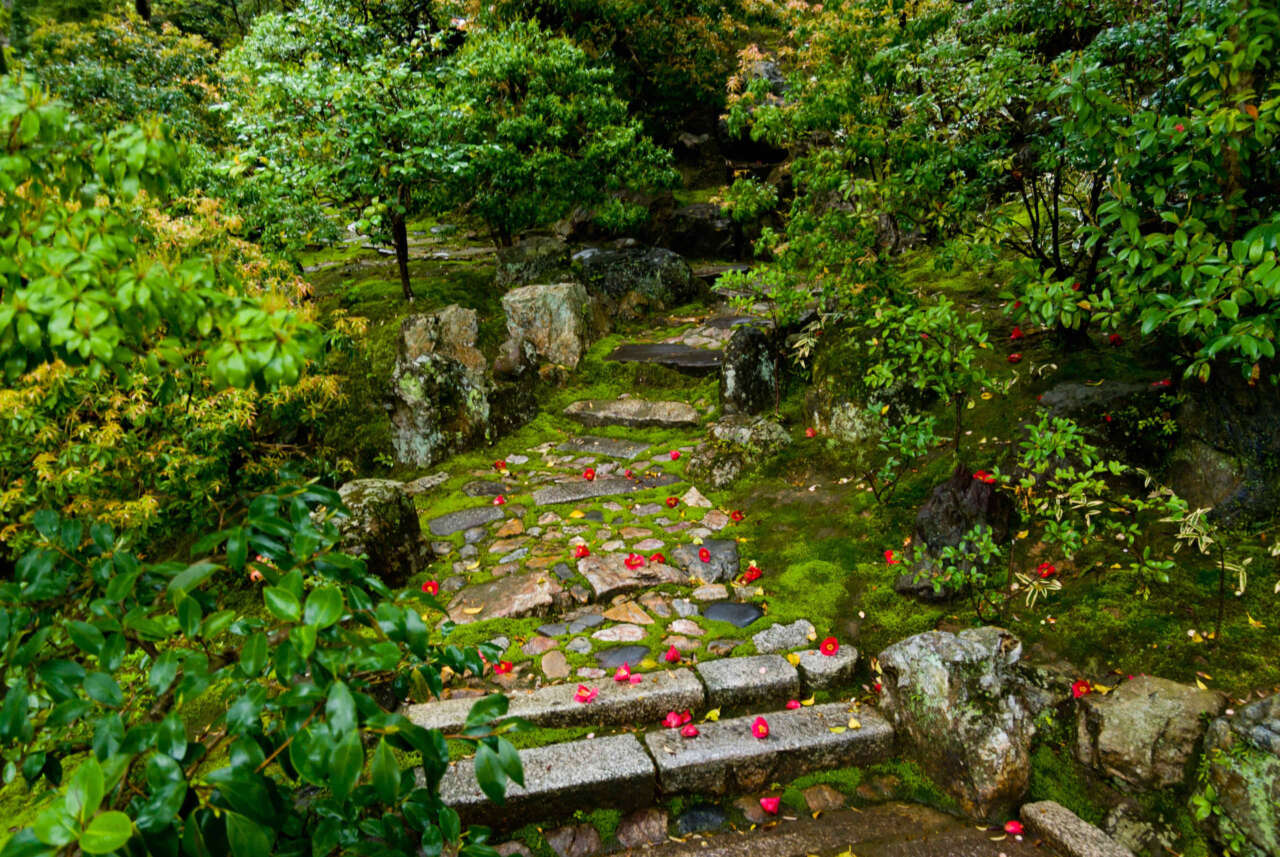
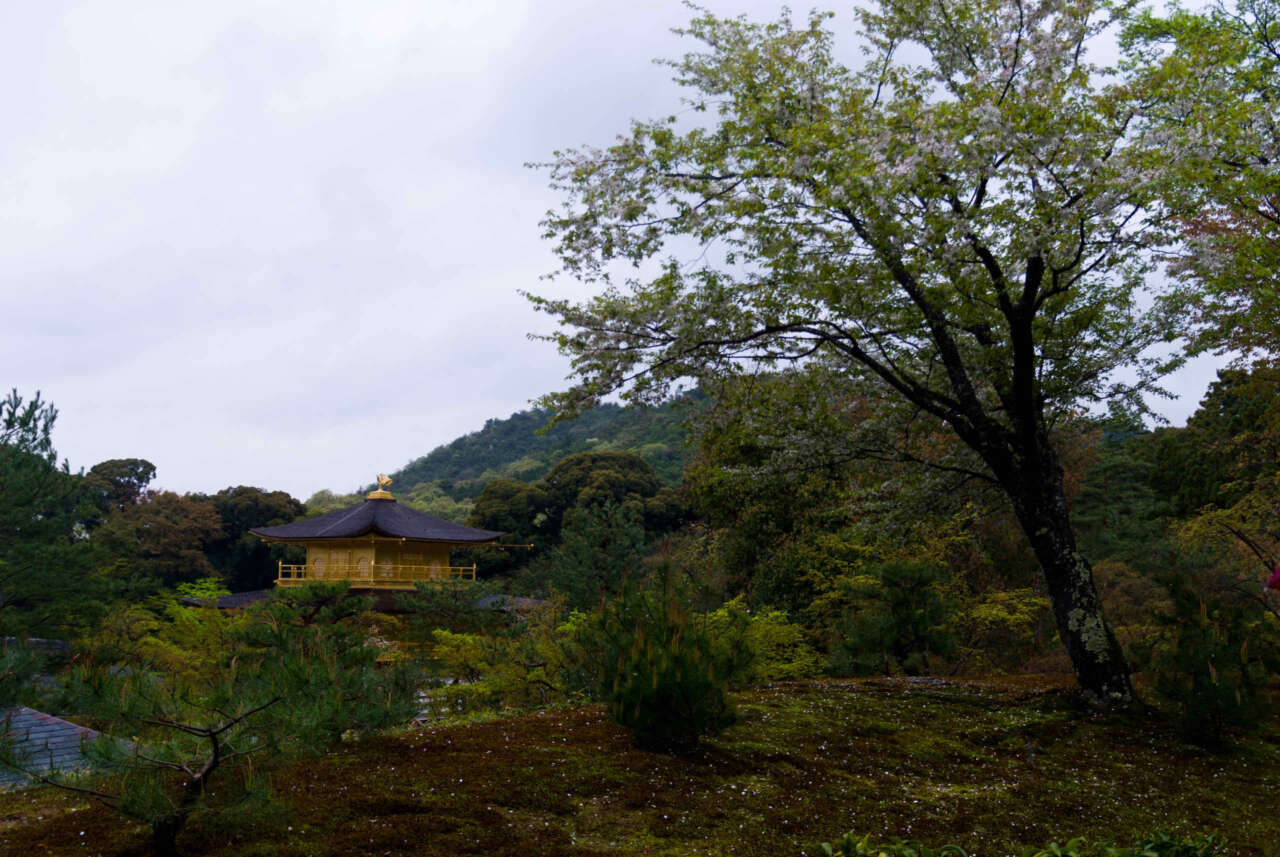
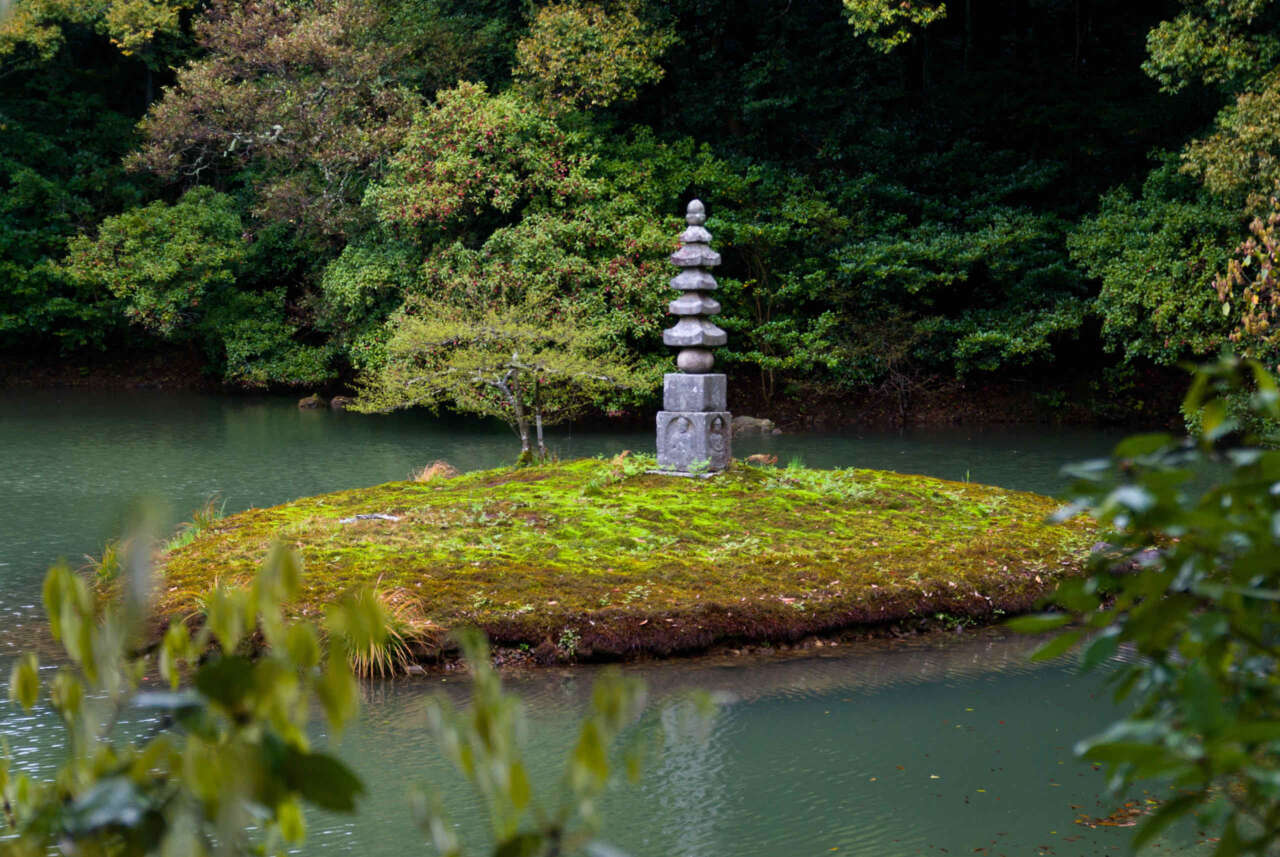
This pond with a stone pagoda called Hakuja-cho (the White Snake Mound or 白蛇塚) in an island in the middle is called Anmin-taku (Tranquility Pond 安民沢).
Anmin-taku, also known as Ushi-taku and Bo’un-taku, is a pond surrounded by deep forest. As it does not dry up even during droughts, it has been used as a place to pray for rain. The small islet inside the pond holds a five-ringed stone pagoda known as Hakuja-cho, or White Snake Mound, and is said to enshrine the Saionji family deity, and thus this pond is considered to be one of the historical remains of the family.
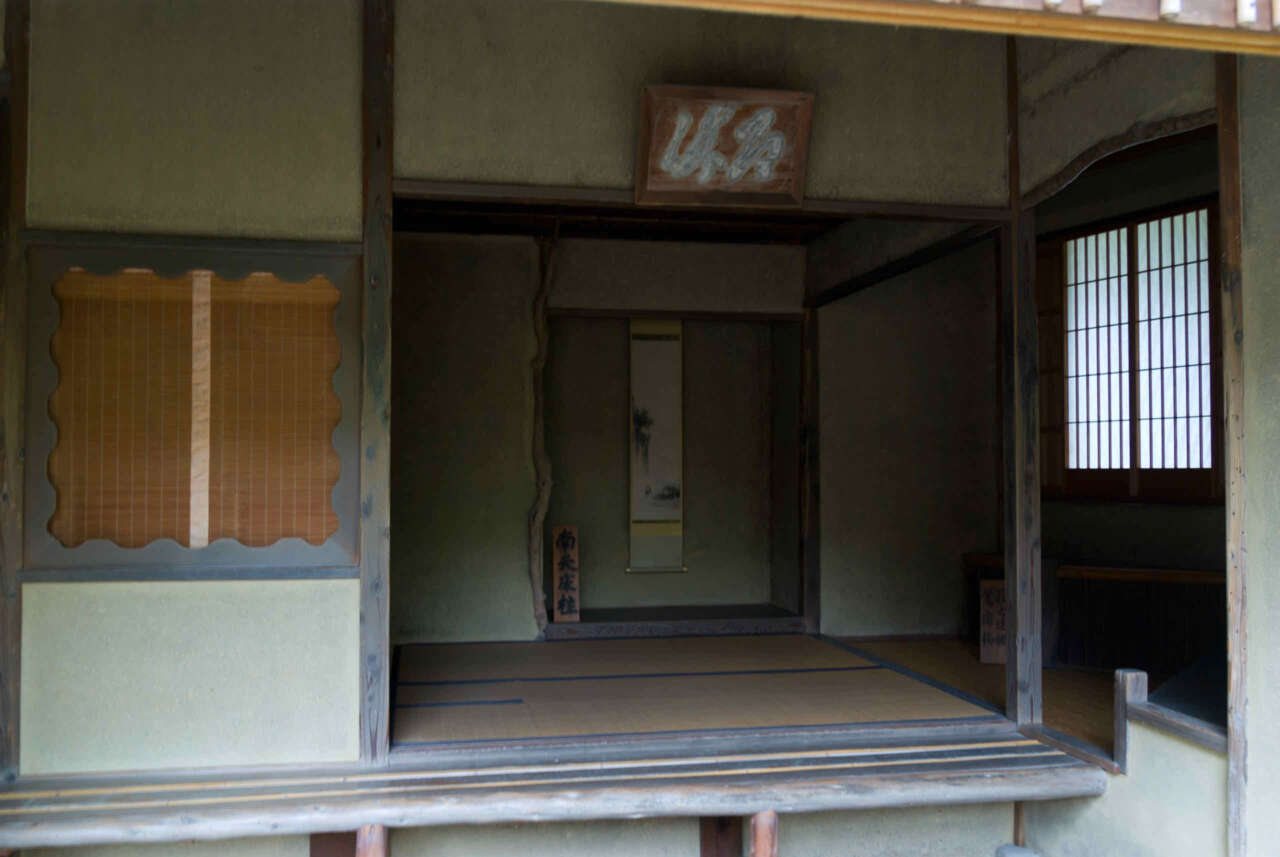
This is the Sekkatei (夕佳亭) – supposedly the best place to view the evening sun reflecting off the Golden Pavilion.
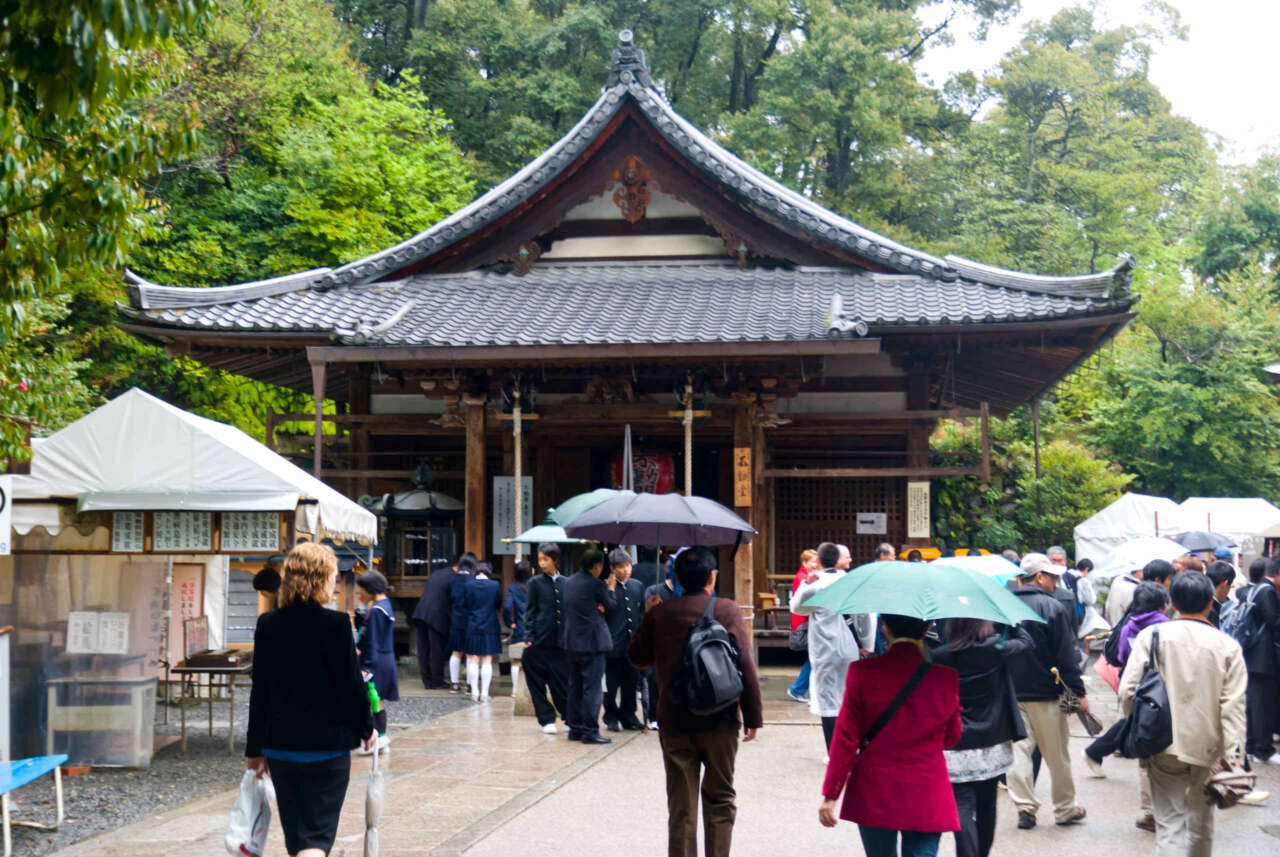
The Fudou Hall (不動堂) is a popular place of worship. There a a stone statue , which is normally hidden from public view (except on special occasions) and widely believed to have miraculous power.
WE finally finished up at a souvenir shop and had refreshments from a vending machine.
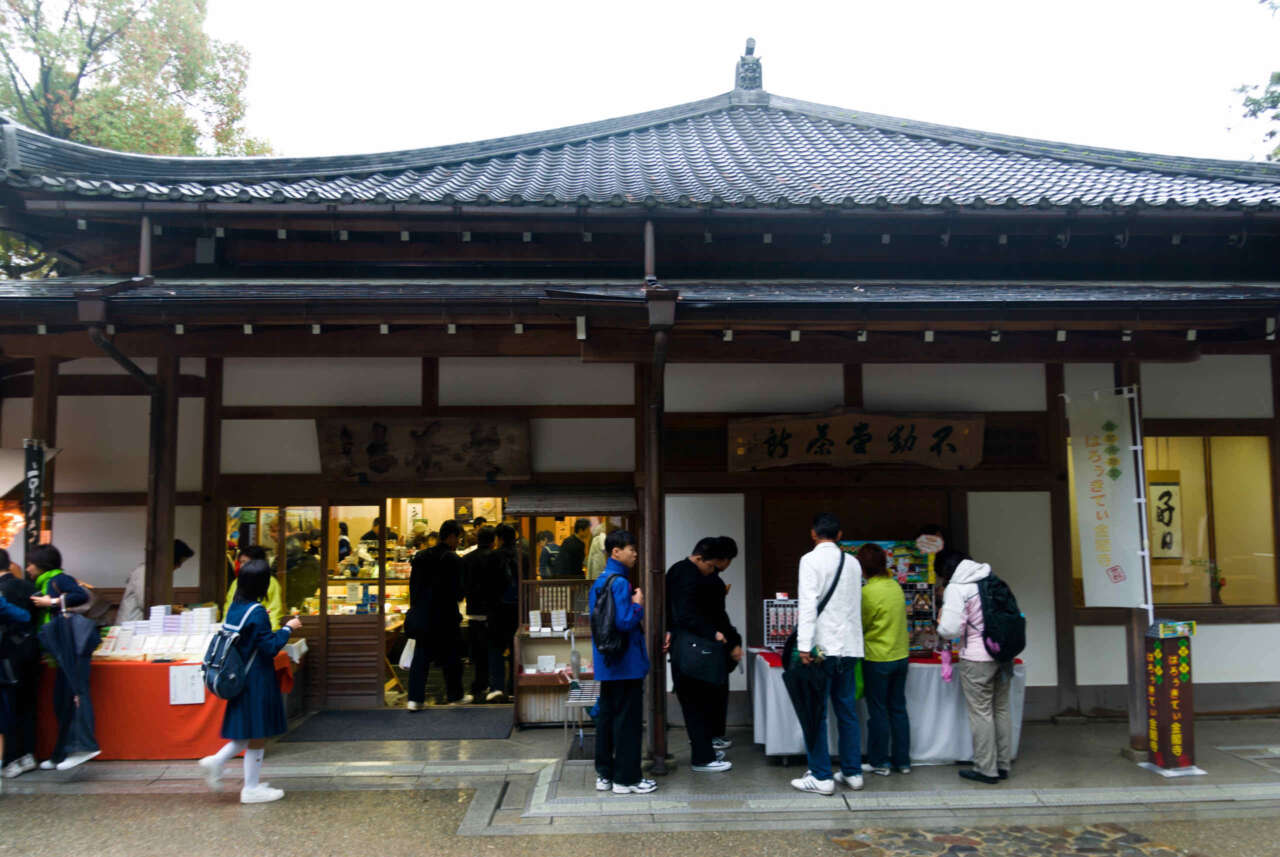
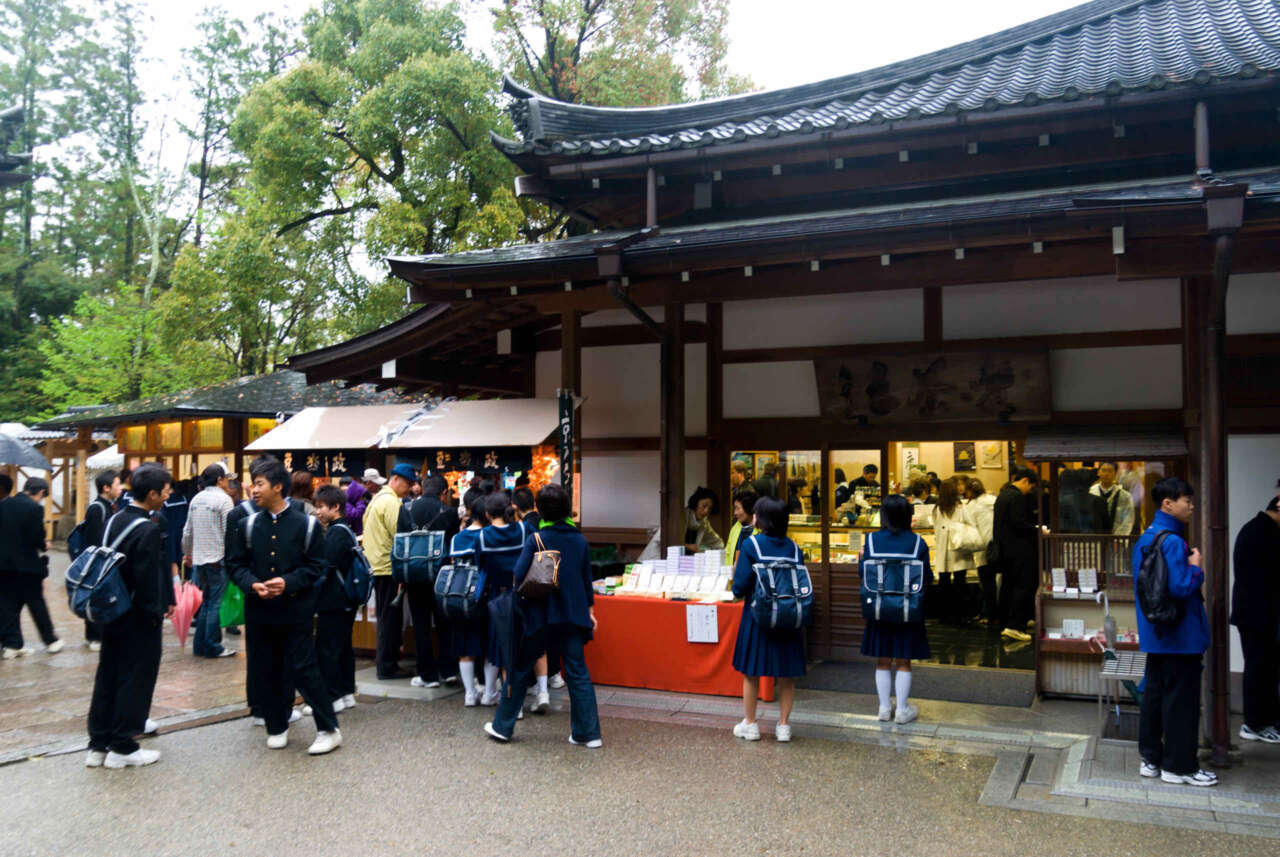
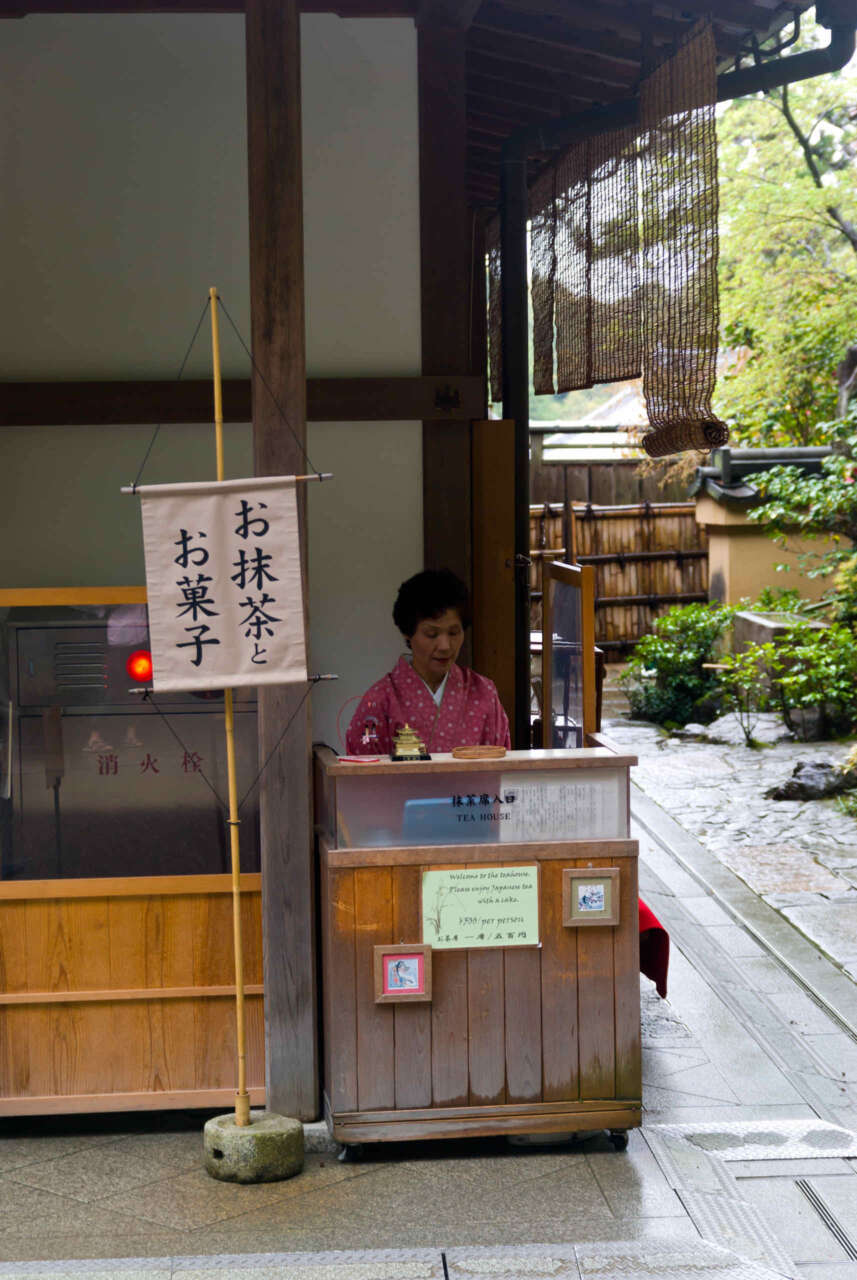
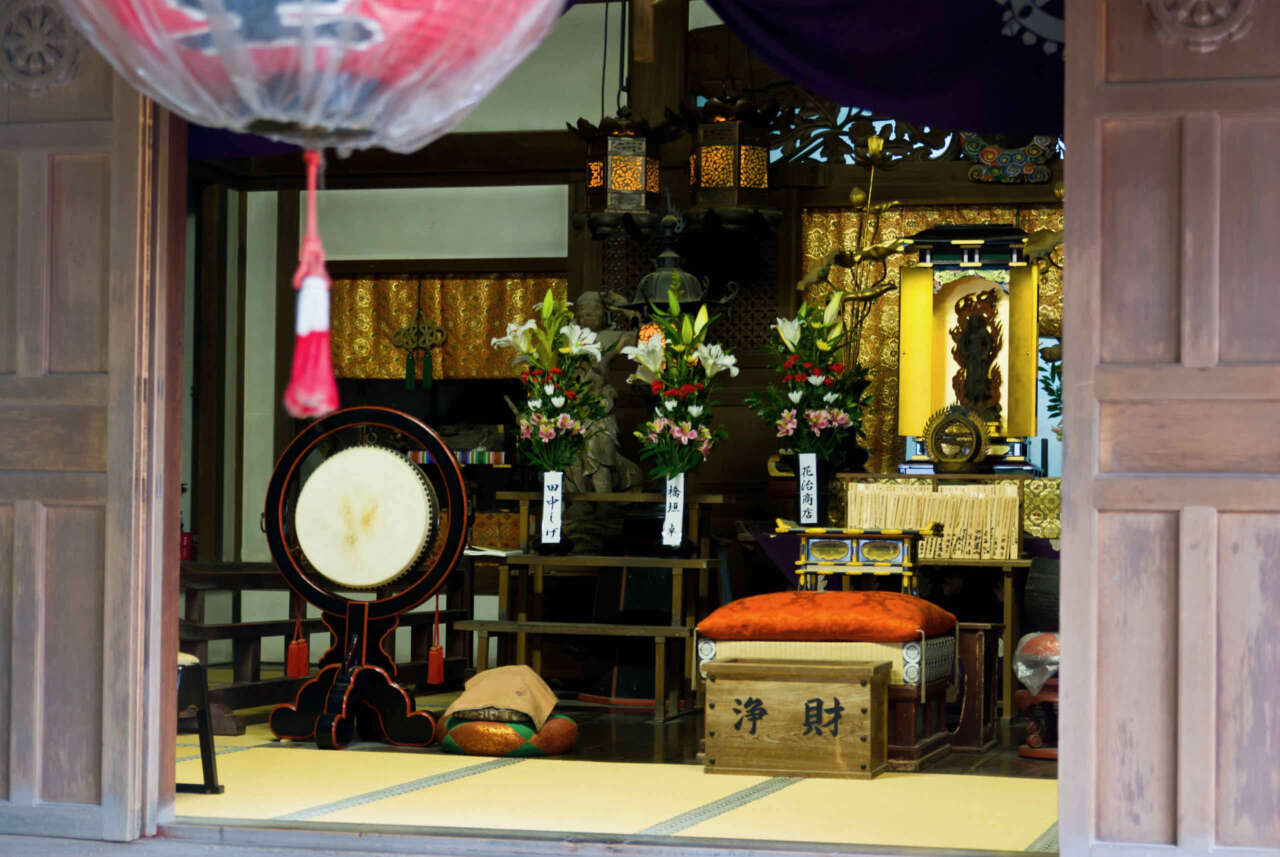
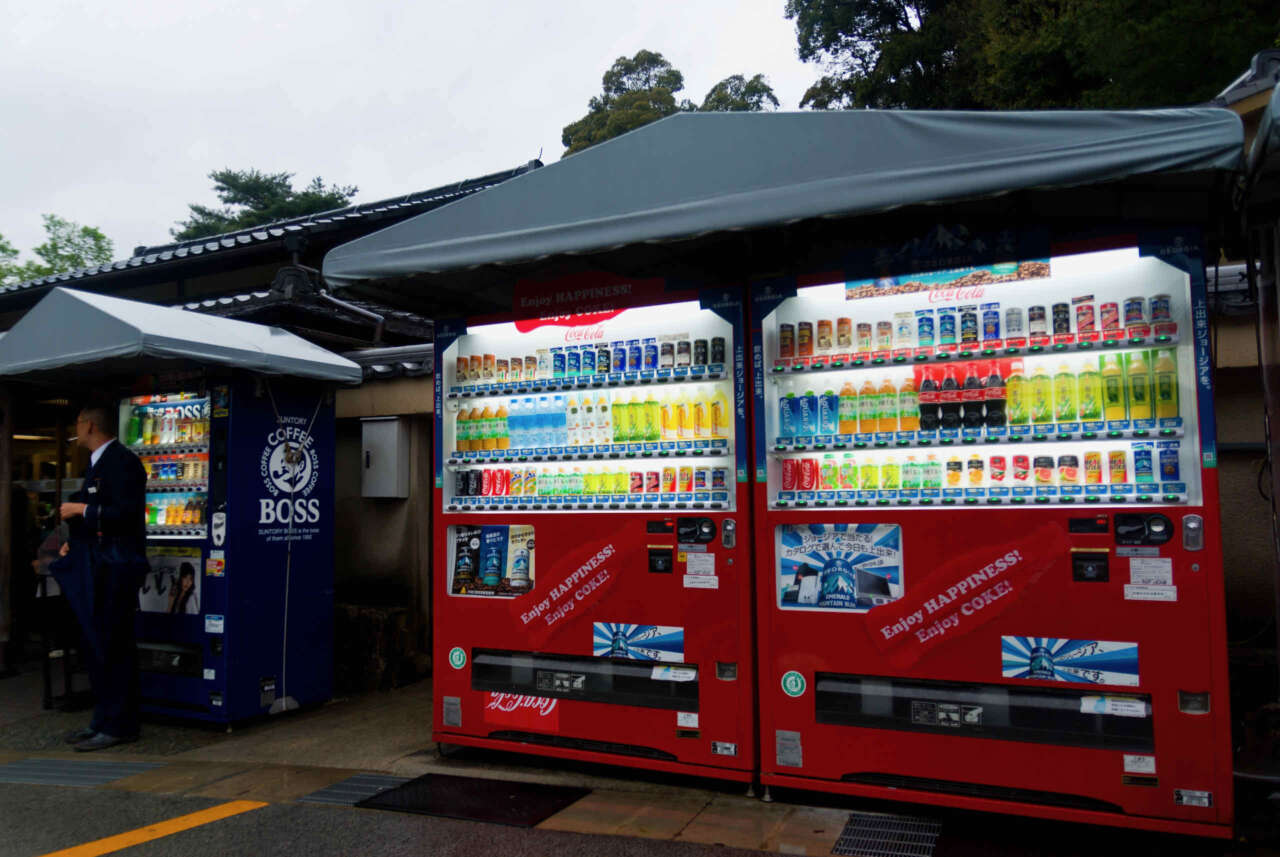
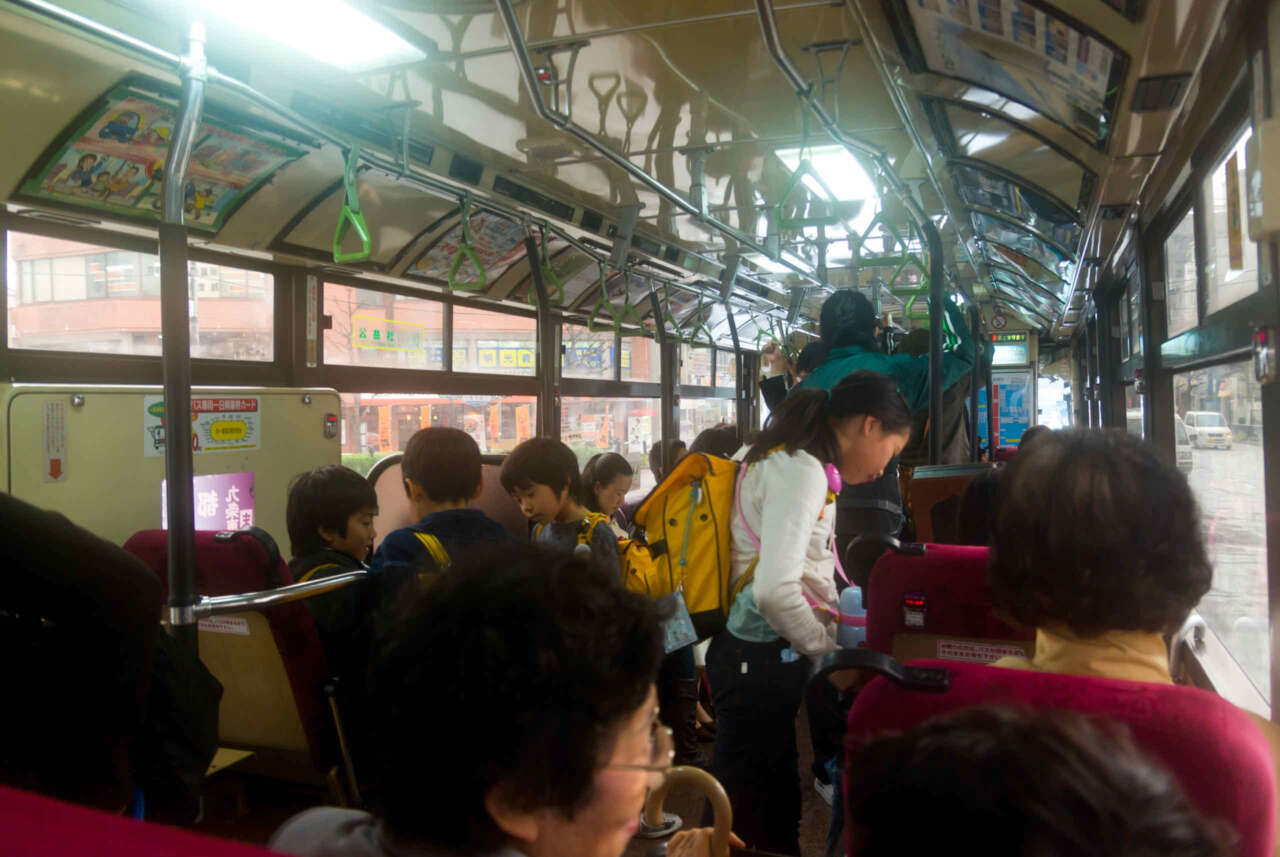
It was so humid the camera was fogged up in the bus:
Full set of photos:






























